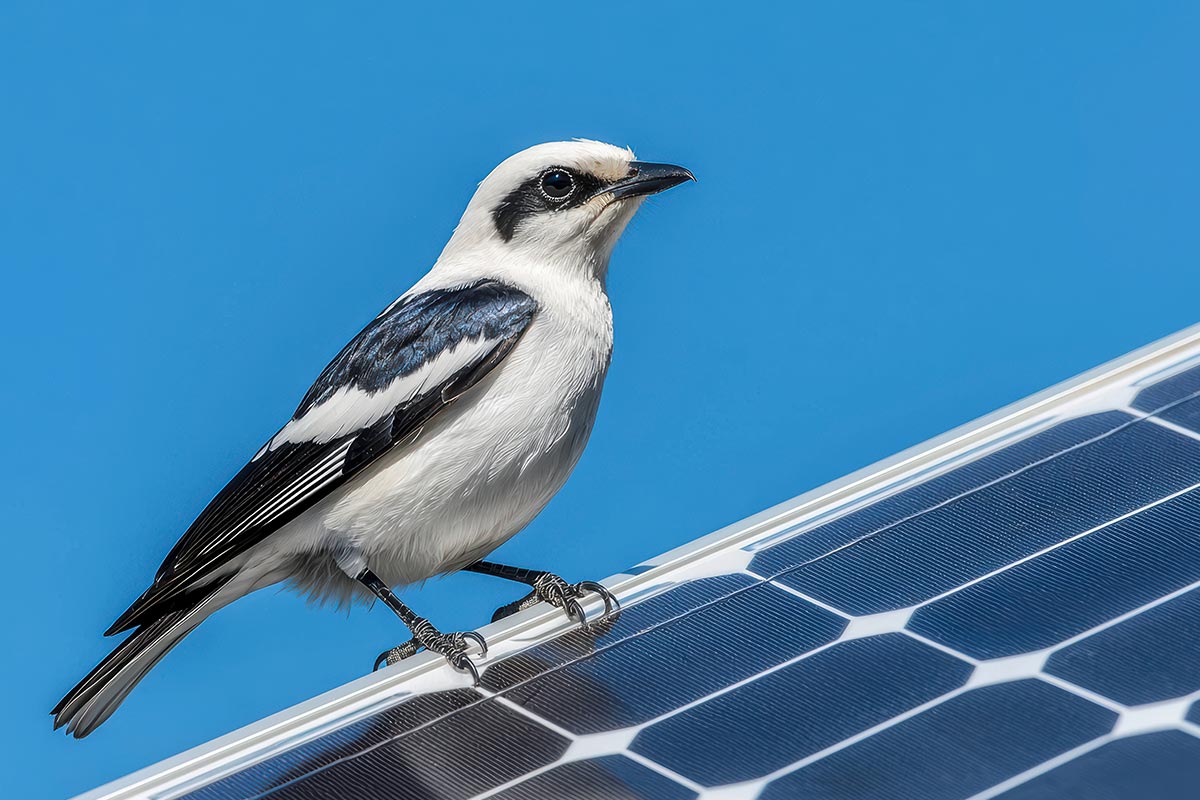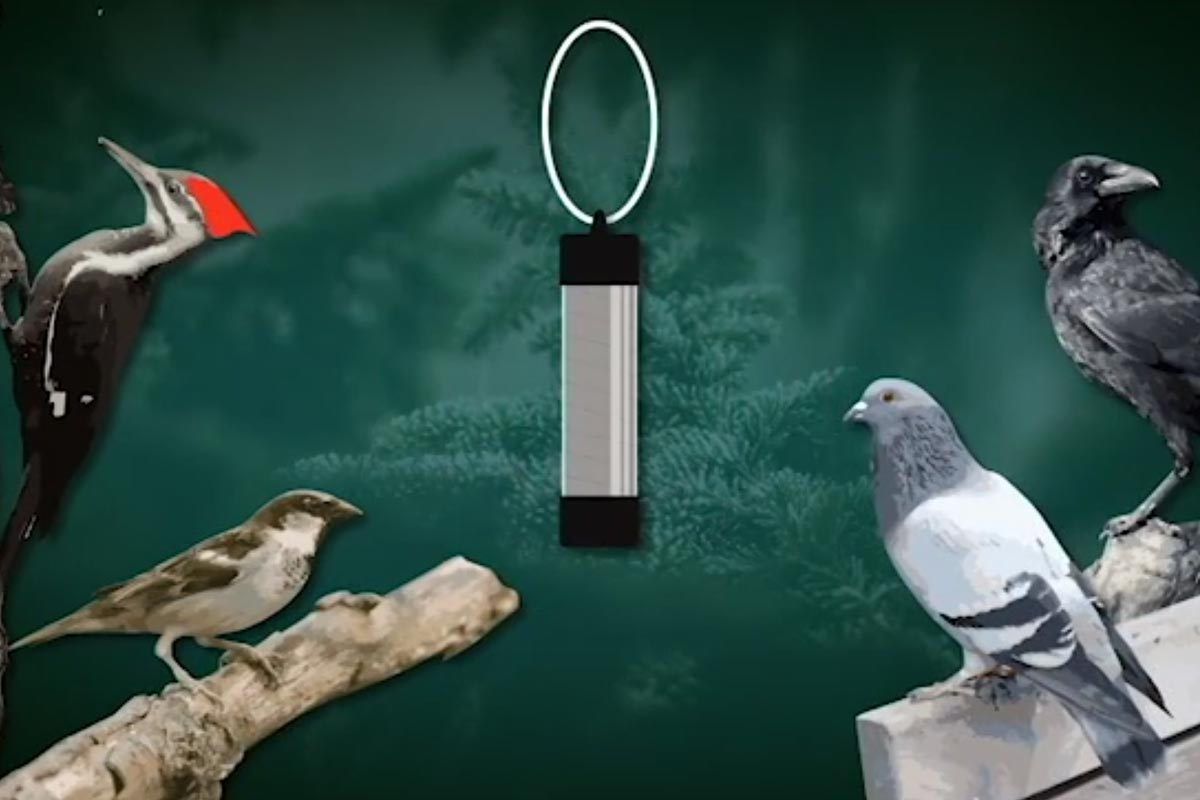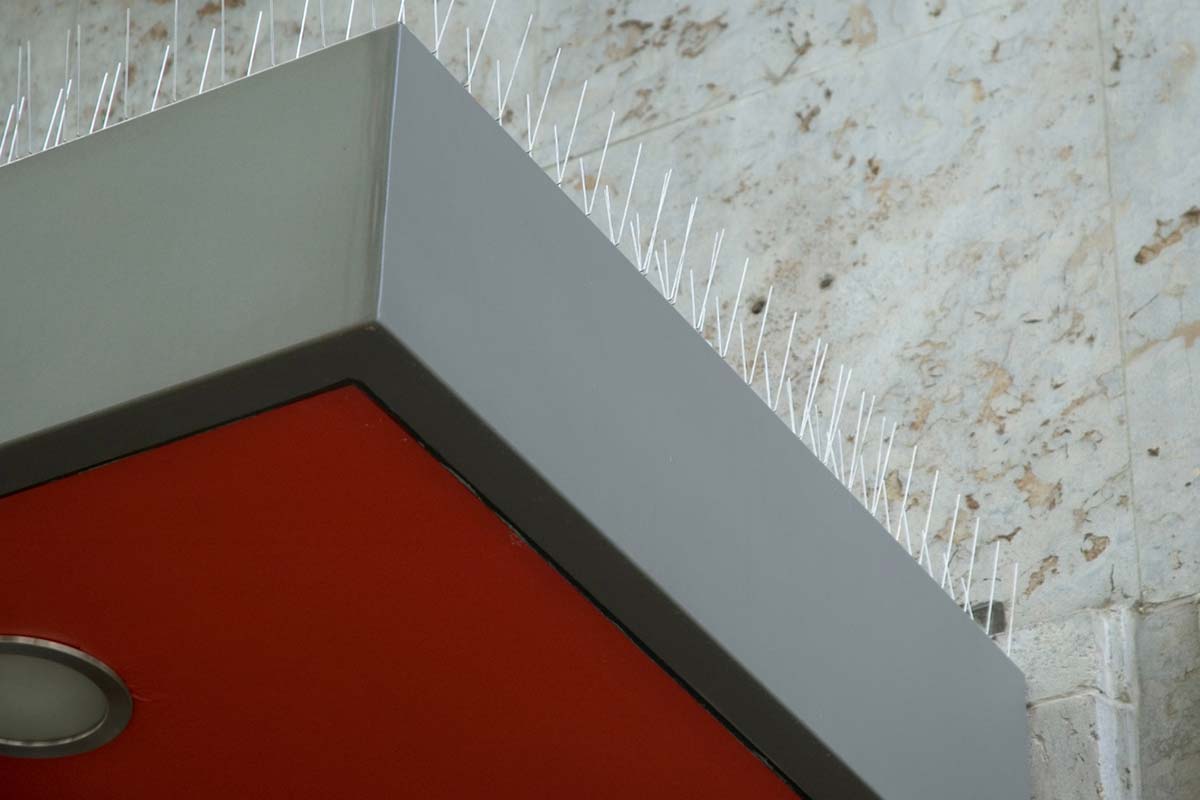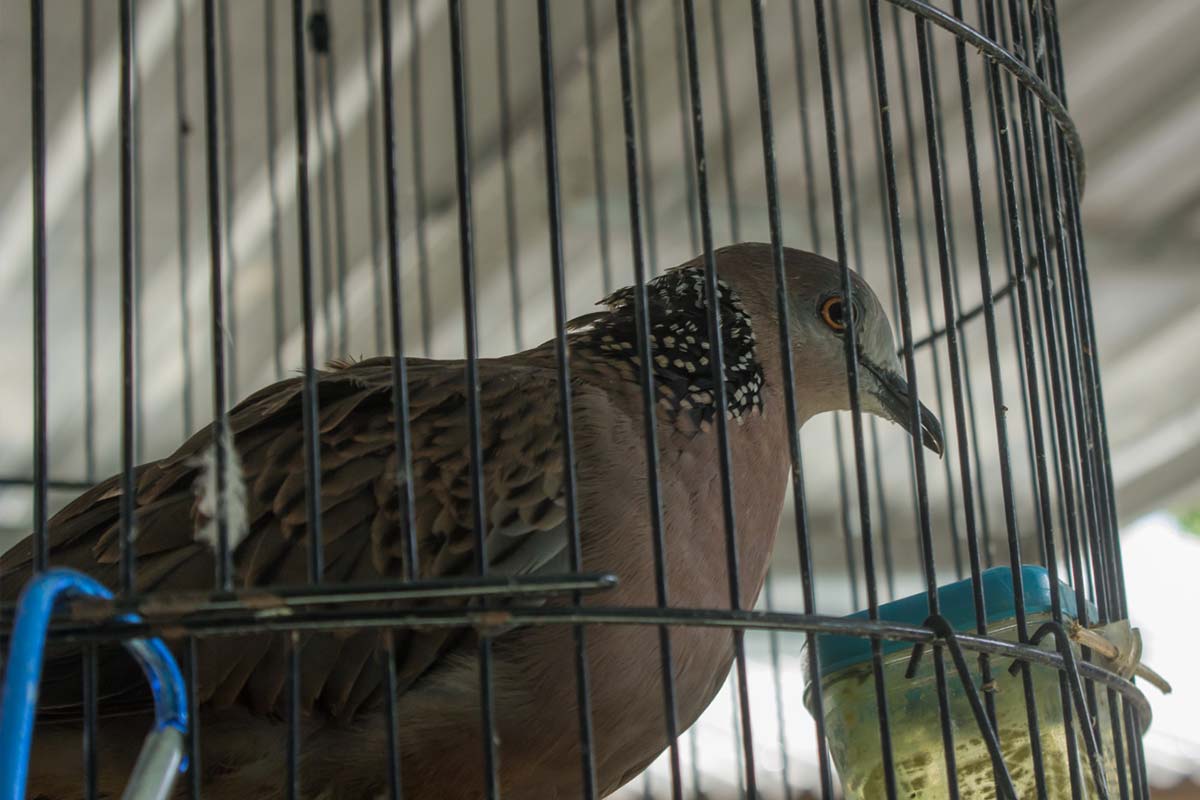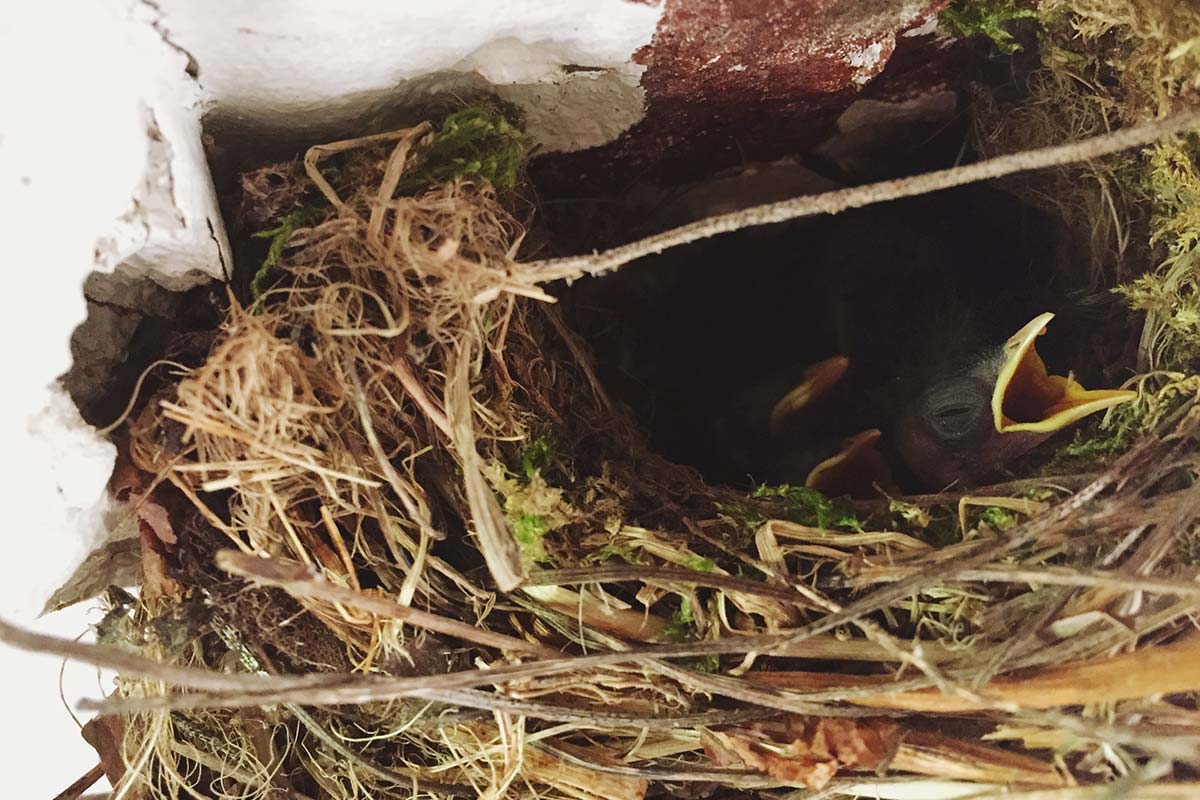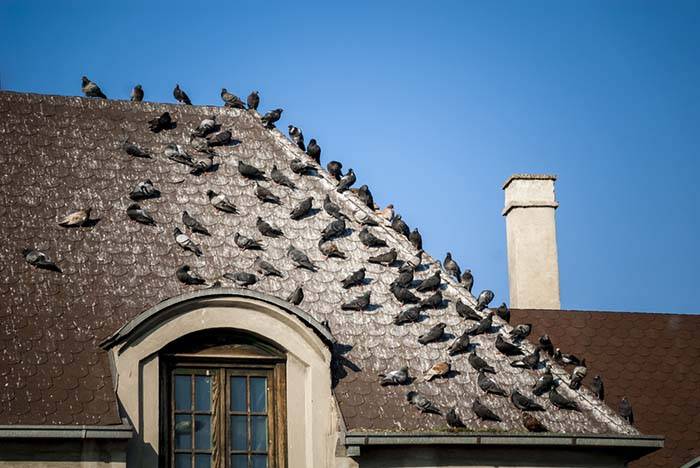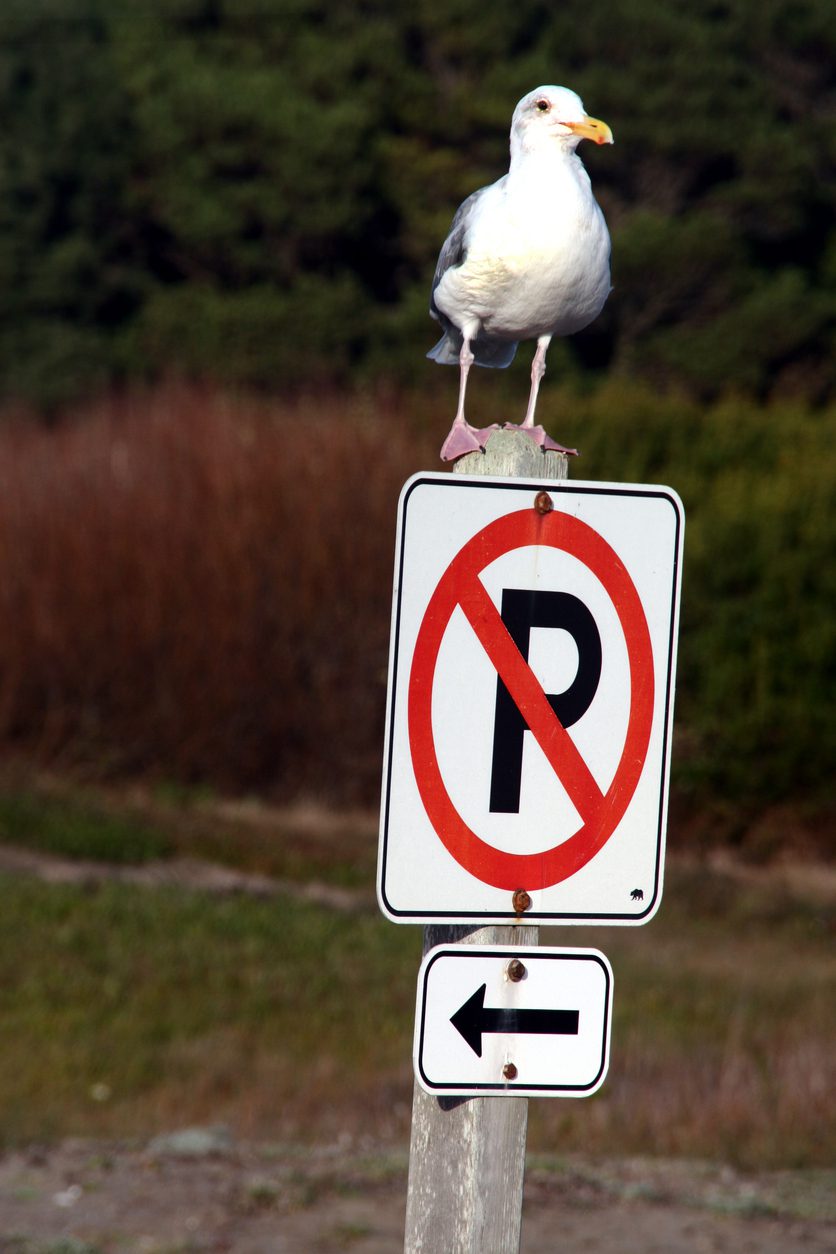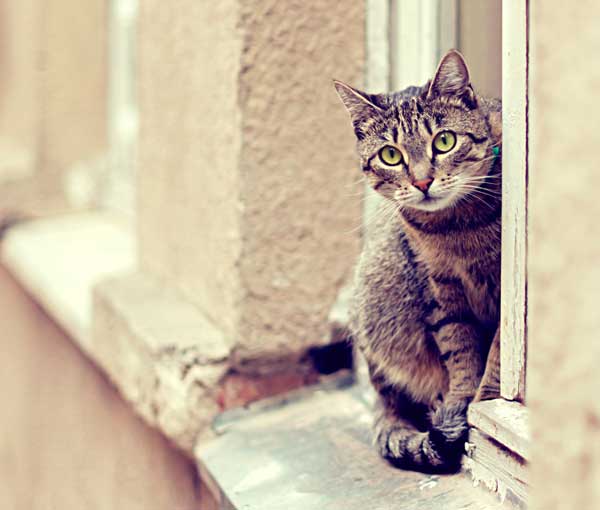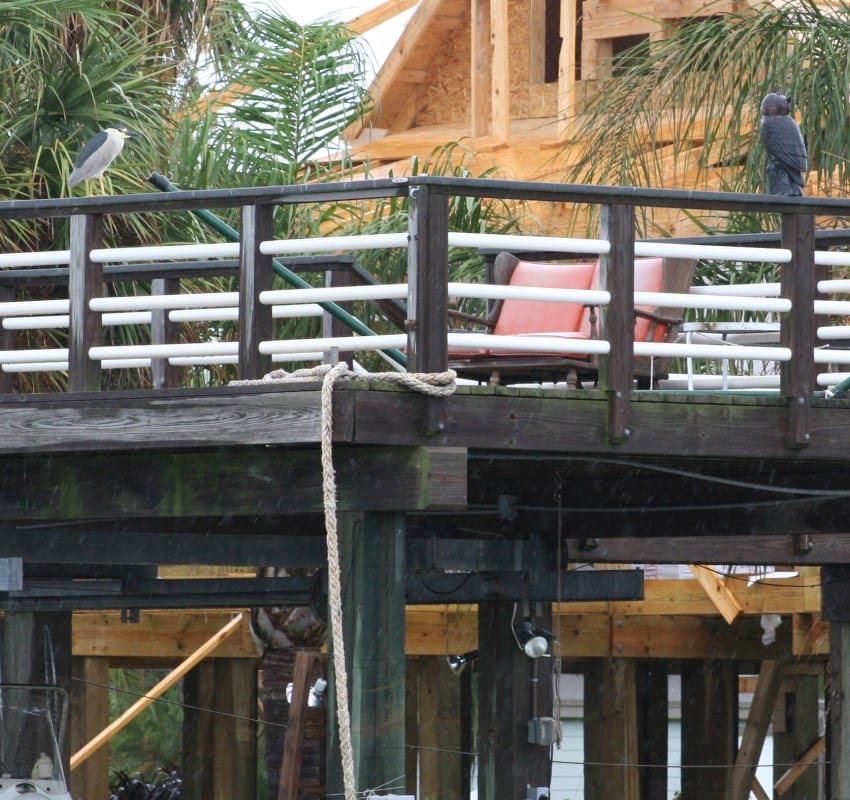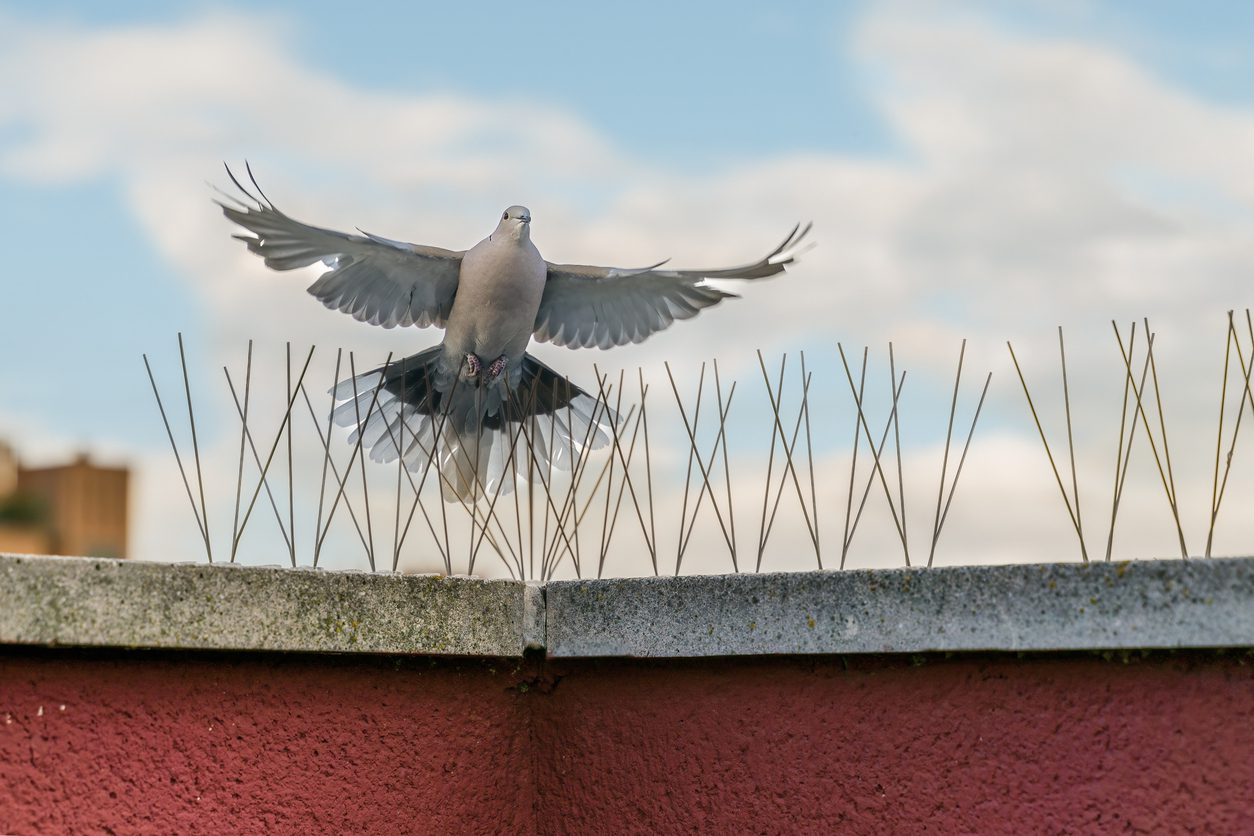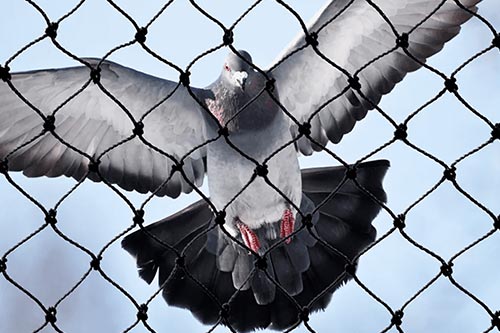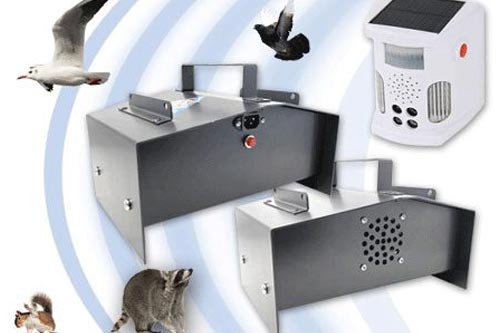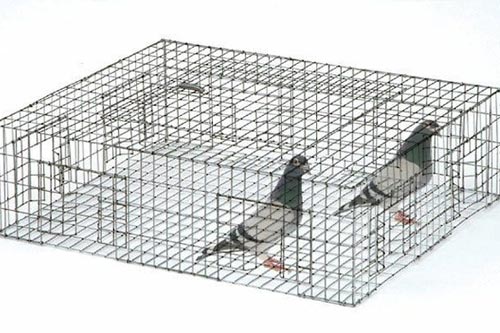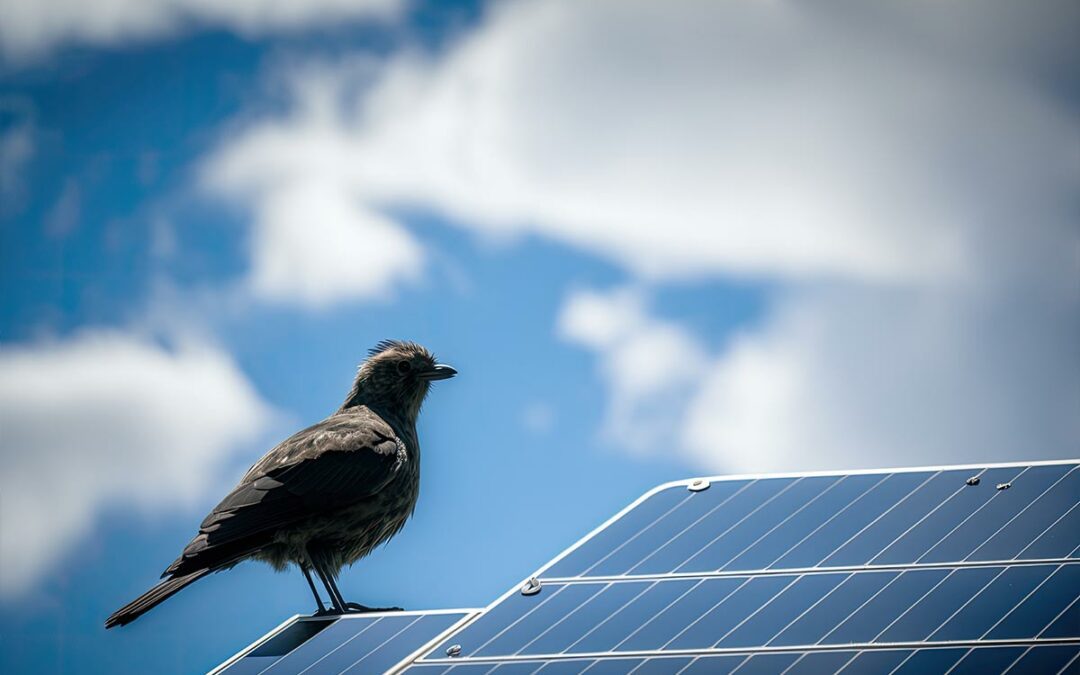
by Pigeon Patrol | Jun 26, 2025 | Animal Deterrent Products, Bird Deterrent Products, Pigeon Control, Pigeon Patrol's Services, Pigeons, Solar Panel Bird Proofing, Sparrows
Solar panels are an excellent investment—but they also attract unwanted tenants: pigeons. Birds love to nest underneath panels because they provide warmth, shade, and protection from predators.
If left unchecked, bird activity can lead to clogged gutters, wiring damage, reduced energy efficiency, and thousands in repairs. The good news? With proper solar panel bird proofing, you can protect your solar system and prevent infestations—all without harming the birds.
Why Do Birds Nest Under Solar Panels?
- Warm, Sheltered Space
Solar panels create the perfect microclimate—warm, dry, and shaded.
- Safety from Predators
Being under panels keeps pigeons out of reach of cats, hawks, and raccoons.
- Easy Access to Nesting Materials
Nearby trees, garbage, or roof gardens provide ample nesting material.
Dangers of Bird Nesting Under Solar Panels
- Wiring Damage – Birds chew and pull on cables
- Fire Risk – Nesting materials are flammable
- Reduced Efficiency – Debris and droppings cause panel shading
- Roof Damage – Moisture and droppings cause corrosion and leakage
- Health Hazards – Pigeon droppings carry histoplasmosis and salmonella
Solar Panel Bird Proofing Products
1. Bird Netting and Solar Mesh Guards
The most effective solution is to install UV-stabilized mesh or netting around the perimeter of the solar array.
Shop Bird Netting Here: https://www.pigeonpatrol.ca/bird-netting/
Benefits:
- Keeps birds from entering underneath panels
- Blends with roof aesthetics
- Weatherproof and long-lasting
- Can be DIY-installed or professionally fitted
2. Bird Spikes for Edges and Frames
Install spikes along the outer edge of solar panels to prevent birds from landing or walking around the system.
Explore Bird Spikes: https://www.pigeonpatrol.ca/bird-spikes/
Best for:
- Lower panel edges
- Surrounding rooftop ledges
- Gutter edges below panels
3. Ultrasonic Bird Repellers
Ultrasonic bird repellers emit high-frequency sound that’s unpleasant for birds but inaudible to humans.
Browse Ultrasonic Repellers: https://www.pigeonpatrol.ca/bird-repeller/
Use alongside netting for added protection.
How to Install Bird Proofing for Solar Panels
Step 1: Clean the Area
Remove all bird nests, droppings, and debris. Disinfect the area thoroughly.
Step 2: Install Mesh or Netting
Use solar mesh clips or roof-friendly fasteners to secure netting around the perimeter of the solar panel system.
Step 3: Add Bird Spikes or Repellers
Install spikes on exposed edges or install a repeller unit to deter future roosting attempts.
Step 4: Regular Maintenance
Inspect the proofing system every 6–12 months for wear and tear, especially after heavy storms.
Who Needs Solar Panel Bird Proofing?
- Homeowners with Rooftop Solar
Especially in urban or suburban areas with high pigeon populations.
- Commercial Properties with Solar Arrays
Warehouses, retail plazas, schools, or hospitals with rooftop solar systems.
- Solar Panel Installers & Property Managers
Protect client investments and reduce callbacks for bird-related service issues.
Combine Bird Proofing for Best Results
| Solution |
Purpose |
| Bird Netting |
Blocks access beneath panels |
| Bird Spikes |
Prevents landing or perching |
| Ultrasonic Devices |
Covers larger roof areas |
| Regular Cleaning |
Removes attraction sources (food, nesting material) |
Can birds damage solar panels?
Yes. Birds can damage wiring, reduce efficiency, and cause expensive roof damage.
What is the best way to bird-proof solar panels?
The most effective method is mesh or netting around the perimeter, combined with bird spikes and ultrasonic deterrents.
How long does solar panel bird proofing last?
Pigeon Patrol’s mesh and netting systems are rated for 5–10 years or longer.
Will this hurt the birds?
No. All products are humane, non-toxic, and environmentally safe.
Bird-proofing your solar panels is a small investment that protects your energy system, roof, and health. Whether you’re a homeowner or a building manager, the best time to act is before pigeons move in.
Shop bird control products now at: https://www.pigeonpatrol.ca
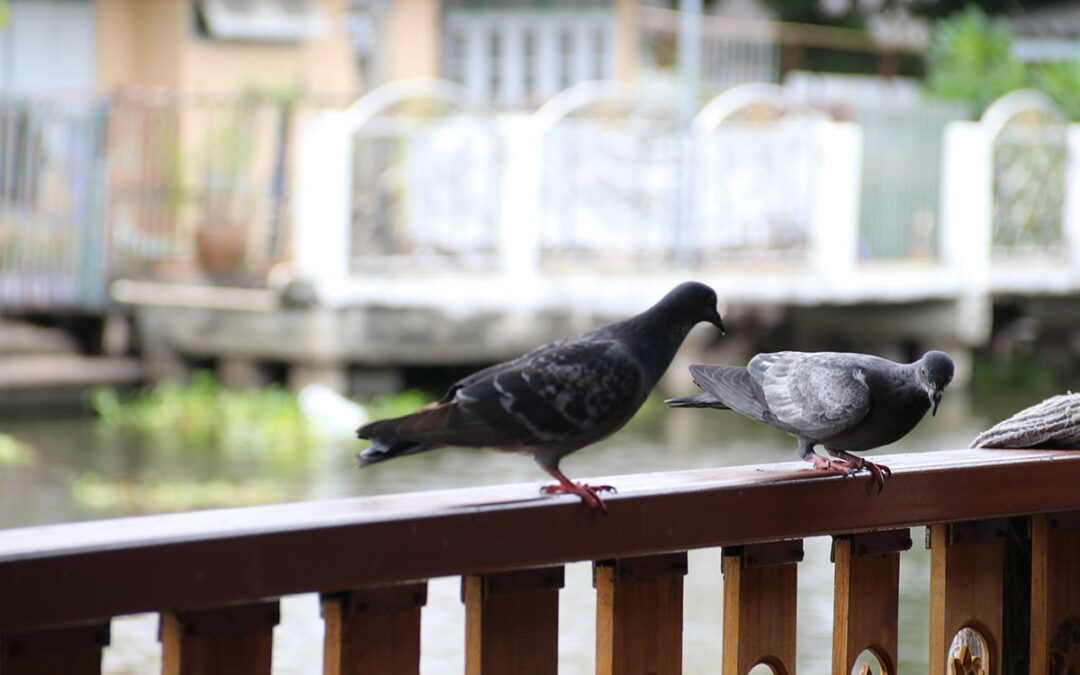
by Pigeon Patrol | Jun 23, 2025 | Animal Deterrent Products, Bird Deterrent Products, Magnetic Bird Defender, Pigeon Control, Pigeon Patrol's Services, Pigeons, Sparrows
If you live in a condo or apartment, you know how frustrating it is when pigeons take over your balcony. They leave droppings, feathers, and nesting materials, turning your relaxing outdoor space into a dirty, unsanitary mess.
Fortunately, pigeon control for balconies is not only possible—it’s easy, affordable, and completely humane. In this article, we’ll walk you through the best ways to deter pigeons from your balcony, using proven products from Pigeon Patrol.
Why Pigeons Love Balconies
Balconies are perfect roosting spots for pigeons because they offer:
- Shelter from wind and rain
- Proximity to food sources
- Ideal nesting areas behind furniture, BBQs, and planters
- Quiet, undisturbed locations
Problems Pigeons Cause on Balconies
- Health Hazards
Pigeon droppings carry fungi, bacteria, and parasites that can cause:
- Histoplasmosis
- E. coli
- Salmonella
- Structural Damage
Their acidic waste corrodes concrete, railings, and balcony furniture.
- Mess and Odor
Feathers, nesting materials, and droppings smell bad and look worse.
Best Pigeon Control Products for Balconies
1. Bird Spikes for Railings and Ledges
Bird spikes are an effective physical barrier to keep pigeons from landing or perching on your railing.
Shop Bird Spikes: https://www.pigeonpatrol.ca/bird-spikes/
Benefits:
- Easy to install with adhesive
- 100% humane
- Long-lasting and weatherproof
2. Pigeon Netting for Full Enclosure
Netting creates a complete barrier that blocks pigeons from flying in at all.
Browse Balcony Netting: https://www.pigeonpatrol.ca/bird-netting/
Best for:
- Balconies with multiple open sides
- High-rise apartments
- Ongoing infestations
3. Ultrasonic Bird Repellers
These devices emit high-frequency sound that pigeons can’t stand—but you can’t hear.
View Ultrasonic Repellers: https://www.pigeonpatrol.ca/bird-repeller/
Ideal for:
- Urban condos
- Small or medium-sized balconies
- Residents looking for low-visibility options
4. Balcony Fence Spikes and Barriers
Perfect for fence tops, planters, or railing edges where pigeons try to land.
Check Out Fence Spikes: https://www.pigeonpatrol.ca/de-fence-wall-spikes/
5. Magnetic Bird Defender (Balcony)
Magnetic bird repellers have proven successful in preventing birds from flying into specific areas. A strong magnetic force interferes with birds sense of direction which confuses and disorientates pest birds, causing them to leave the area effected. These are excellent pigeon deterrents.
Check Out Magnetic Bird Defender: https://www.pigeonpatrol.ca/product/magnetic-bird-defender/
How to Pigeon-Proof Your Balcony – Step-by-Step
Step 1: Clean the Area
Remove all droppings, nesting materials, and debris. Sanitize thoroughly.
Step 2: Install Barriers
Apply spikes to railings and ledges, or install netting across the open areas.
Step 3: Use a Repeller
Place an ultrasonic device or sound deterrent to add another layer of defense.
Step 4: Remove Attractants
Eliminate open food, water, or cozy nooks where pigeons may try to nest.
Bonus Tips for Pigeon-Free Balconies
- Avoid feeding other birds—it attracts pigeons
- Remove cushions or cover furniture when not in use
- Use motion-activated deterrents if spikes and netting aren’t enough
- Don’t use fake owls unless you move them regularly (pigeons will learn they’re fake)
Why Choose Pigeon Patrol for Balcony Pigeon Control?
- Serving BC’s Lower Mainland for 15+ years
- All products are safe, humane, and discreet
- Trusted by property managers, homeowners, and condo associations
- Fast shipping and professional advice
Are bird spikes legal to use on balconies?
Yes. They’re completely legal, humane, and used on buildings worldwide.
Can I install pigeon netting myself?
Yes, but if you’re unsure, a professional installer will ensure full coverage with no gaps.
Will the deterrents harm birds?
No. All solutions are non-lethal and environmentally safe.
How quickly do pigeons leave after deterrents are installed?
Often within days—but it depends on how long they’ve nested. Older infestations may take longer.
If pigeons have made your balcony their home, it’s time to
take it back. With a combination of
spikes, netting, and ultrasonic repellers, you can
enjoy your outdoor space again—clean, quiet, and bird-free.
Get started today with balcony pigeon control products from: https://www.pigeonpatrol.ca
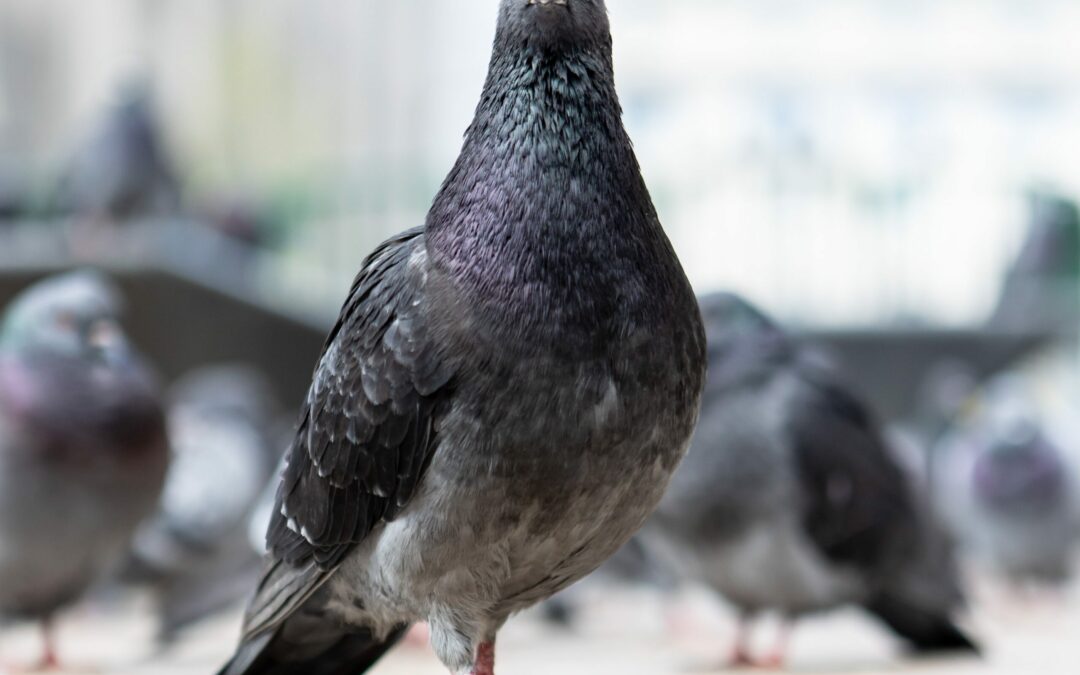
by Pigeon Patrol | Jun 8, 2025 | Bird Spikes, Pigeon Predators, Pigeon Spikes, Pigeons in the News
The steps of City Hall, once a symbol of civic pride, are now stained with something far less noble—pigeon droppings. A growing population of urban pigeons has turned the historic building into a nesting ground and bathroom, much to the frustration of city workers and residents.
“It’s absolutely disgusting,” said Angela Simmons, a clerk at the records office. “Every morning, we have to dodge piles of droppings just to get to the front door. Some days I have to bring a change of shoes.”
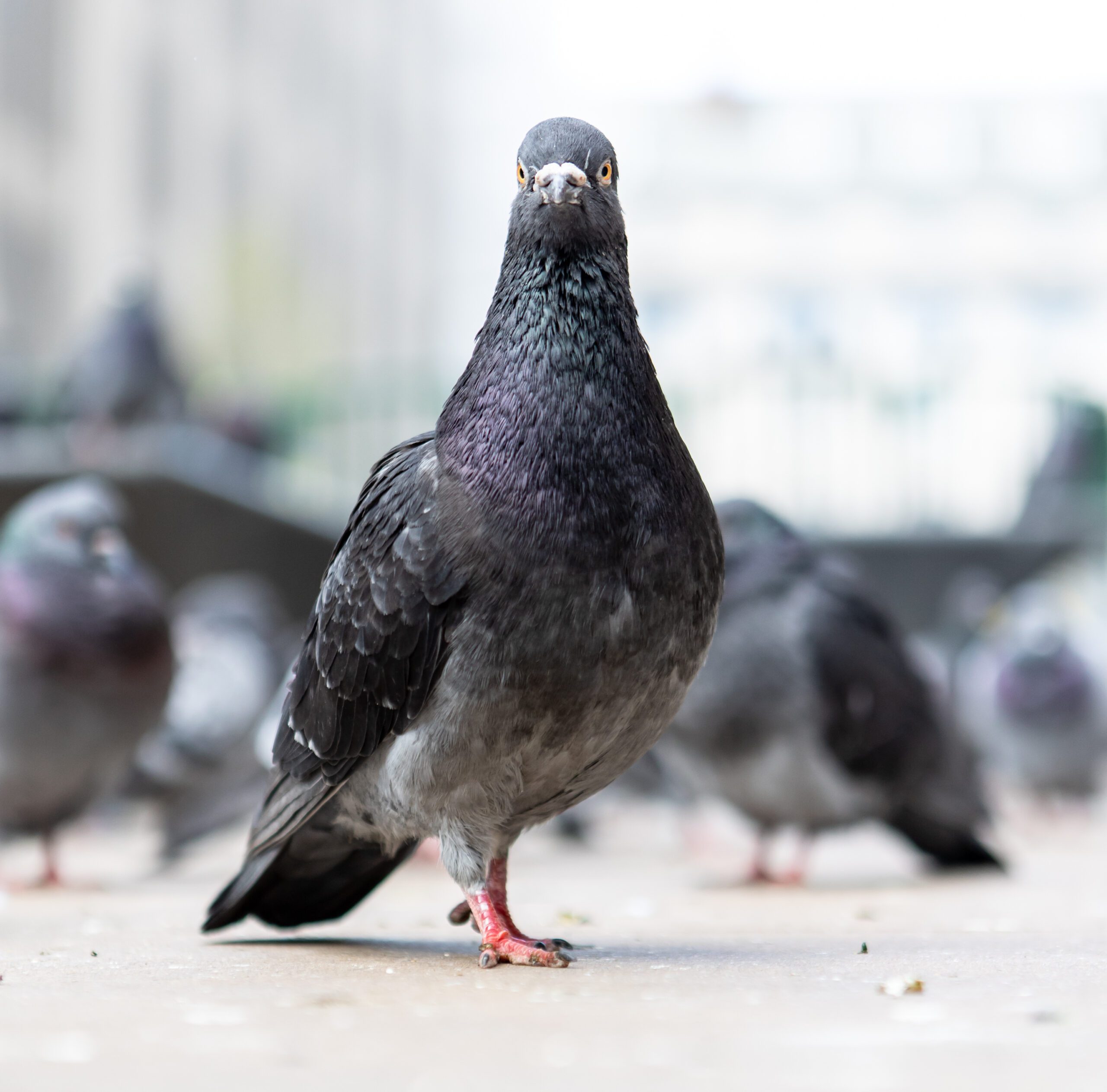
A closeup shot of a Feral pigeon in a city
The Department of Public Health has issued a warning about potential respiratory illnesses associated with dried pigeon feces, including histoplasmosis and cryptococcosis, both of which can cause serious lung infections.
Maintenance crews are power-washing the building’s steps twice a week, but it hasn’t been enough. “We’re just chasing the problem,” said Facilities Manager Larry Cho. “Until we deal with the birds themselves, we’ll keep mopping up after them.”
City Council is expected to vote next Tuesday on a proposed ordinance that would fund humane deterrents such as bird netting, sloped ledges, and the installation of owl decoys.
Pigeon Patrol Products & Services is the leading manufacturer and distributor of bird deterrent (control) products in Canada. Pigeon Patrol products have solved pest bird problems in industrial, commercial, and residential settings since 2000, by using safe and humane bird deterrents with only bird and animal -friendly solutions. At Pigeon Patrol, we manufacture and offer a variety of bird deterrents, ranging from Ultra-flex Bird Spikes with UV protection, Bird Netting, 4-S Bird Gel and the best Ultrasonic and audible sound devices on the market today.
Best Types of Pigeon Repellent
- Bird Spikes– Pigeons can’t land on surfaces with bird spikes—perfect for ledges, sills, signs, and fences.
Shop Bird Spikes: https://www.pigeonpatrol.ca/bird-spikes/
- Bird Sound Deterrents / Ultrasonic Repellers– Emit high-frequency sound to drive pigeons away without harming them.
Browse Ultrasonic Bird Repellers: https://www.pigeonpatrol.ca/bird-repeller/
- Pigeon Netting– Blocks pigeons from accessing nesting zones permanently.
See Pigeon Netting: https://www.pigeonpatrol.ca/bird-netting/
Canada’s top wholesaler for bird deterrent products for twelve consecutive years.
Contact us at 1- 877– 4– NO-BIRD, (604) 585-9279 or visit our website at https://www.pigeonpatrol.ca/
Bird Gone, Pigeon Gone, Pigeon problems, pigeon spikes, 1-877-4NO-BIRD, 4-S Gel, Bird Control, Pigeon Control, bird repellent, Bird Spikes, sonic bird repellent, stainless steel bird spikes, bird spikes Vancouver, Ultra Sonic Bird Control, Bird Netting, Plastic Bird Spikes, Canada bird spike deterrents, Pigeon Pests, B Gone Pigeon, Pigeon Patrol, pest controller, pest control operator, pest control technician, Pigeon Control Products, humane pigeon spikes, pigeon deterrents, pigeon traps, Pigeon repellents, Sound & Laser Deterrents, wildlife control, raccoon, skunk, squirrel deterrent, De-Fence Spikes, Dragons Den, Pigeon, Pigeon Patrol, Pigeons Roosting, Vancouver Pigeon Control, Bird Spikes, Bird Control, Bird Deterrent, Pigeon Deterrent, Surrey Pigeon Control, Pest, Seagull deterrent Vancouver Pigeon Blog, Birds Inside Home De-fence, Pigeon Nesting, Bird Droppings, Pigeon Dropping, woodpecker control, Keep The Birds Away, Birds/rats, seagull, pigeon, woodpecker, dove, sparrow, pidgeon control, pidgeon problem, pidgeon control, flying rats, pigeon Problems, bird netting, bird gel, bird spray, bird nails, bird guard, Pigeon control, Bird deterrents, Pigeon deterrents, Bird control, solutions, Pigeon prevention, Pigeon repellent, Bird proofing, Pest bird management, Pigeon spikes, Bird netting, Humane bird control, Bird exclusion, Urban bird control, Anti-roosting devices, Pigeon removal, Bird barriers

by Pigeon Patrol | Jun 8, 2025 | Pigeon Control, Pigeon Droppings, Pigeon Spikes, Pigeons in the News, Sound Deterrent
The Brighton Clock Tower, a proud piece of the city’s 19th-century heritage, is under siege. Not by vandals or weather—but by pigeons. The acidic nature of their droppings is slowly eroding the sandstone structure, prompting alarm from conservationists and city officials alike.
“The pigeons have turned this into their personal toilet,” said heritage consultant Roger Fairbanks, shaking his head. “And the worst part is the damage is cumulative. What’s already been lost can’t be restored.”
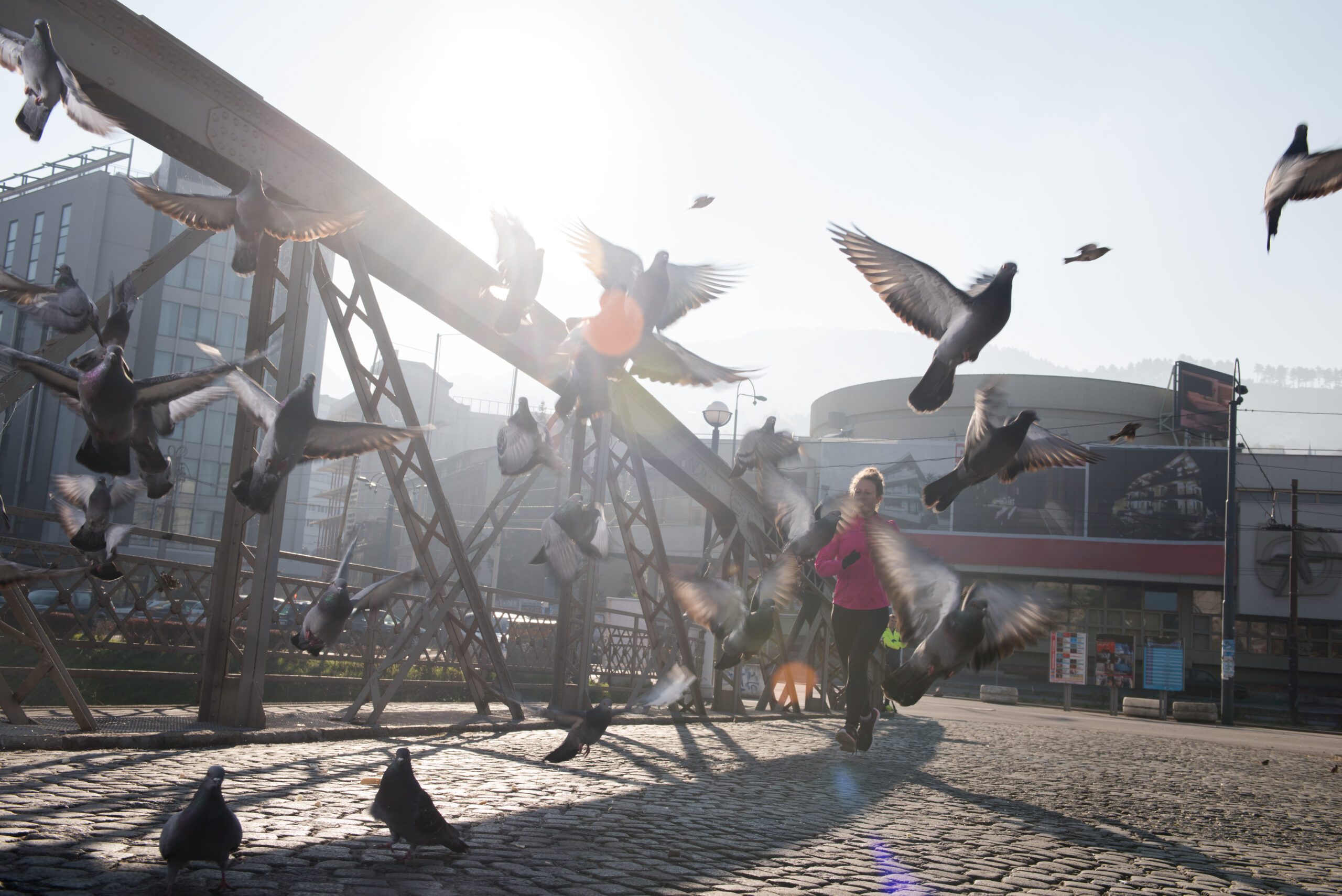
Pigeons!!!
According to the Brighton Historical Society, the tower has not undergone a full cleaning in over five years. Recent inspections revealed black crusted layers of guano on upper ledges and a corrosion ring forming around the base.
Local residents are upset by what they see as neglect. “It’s embarrassing,” said Anna Pritchard, who brings tourists to the area. “They ask me about the clock, and I’m afraid to tell them what’s actually on it.”
City engineers are now weighing the cost of installing anti-roosting spikes and motion-activated deterrents. Meanwhile, experts warn that if the situation isn’t addressed soon, the damage could become irreversible.
Pigeon Patrol
Pigeon Patrol Products & Services is the leading manufacturer and distributor of bird deterrent (control) products in Canada. Pigeon Patrol products have solved pest bird problems in industrial, commercial, and residential settings since 2000, by using safe and humane bird deterrents with only bird and animal -friendly solutions. At Pigeon Patrol, we manufacture and offer a variety of bird deterrents, ranging from Ultra-flex Bird Spikes with UV protection, Bird Netting, 4-S Bird Gel and the best Ultrasonic and audible sound devices on the market today.
Best Types of Pigeon Repellent
- Bird Spikes– Pigeons can’t land on surfaces with bird spikes—perfect for ledges, sills, signs, and fences.
Shop Bird Spikes: https://www.pigeonpatrol.ca/bird-spikes/
- Bird Sound Deterrents / Ultrasonic Repellers– Emit high-frequency sound to drive pigeons away without harming them.
Browse Ultrasonic Bird Repellers: https://www.pigeonpatrol.ca/bird-repeller/
- Pigeon Netting– Blocks pigeons from accessing nesting zones permanently.
See Pigeon Netting: https://www.pigeonpatrol.ca/bird-netting/
Canada’s top wholesaler for bird deterrent products for twelve consecutive years.
Contact us at 1- 877– 4– NO-BIRD, (604) 585-9279 or visit our website at https://www.pigeonpatrol.ca/
Bird Gone, Pigeon Gone, Pigeon problems, pigeon spikes, 1-877-4NO-BIRD, 4-S Gel, Bird Control, Pigeon Control, bird repellent, Bird Spikes, sonic bird repellent, stainless steel bird spikes, bird spikes Vancouver, Ultra Sonic Bird Control, Bird Netting, Plastic Bird Spikes, Canada bird spike deterrents, Pigeon Pests, B Gone Pigeon, Pigeon Patrol, pest controller, pest control operator, pest control technician, Pigeon Control Products, humane pigeon spikes, pigeon deterrents, pigeon traps, Pigeon repellents, Sound & Laser Deterrents, wildlife control, raccoon, skunk, squirrel deterrent, De-Fence Spikes, Dragons Den, Pigeon, Pigeon Patrol, Pigeons Roosting, Vancouver Pigeon Control, Bird Spikes, Bird Control, Bird Deterrent, Pigeon Deterrent, Surrey Pigeon Control, Pest, Seagull deterrent Vancouver Pigeon Blog, Birds Inside Home De-fence, Pigeon Nesting, Bird Droppings, Pigeon Dropping, woodpecker control, Keep The Birds Away, Birds/rats, seagull, pigeon, woodpecker, dove, sparrow, pidgeon control, pidgeon problem, pidgeon control, flying rats, pigeon Problems, bird netting, bird gel, bird spray, bird nails, bird guard, Pigeon control, Bird deterrents, Pigeon deterrents, Bird control, solutions, Pigeon prevention, Pigeon repellent, Bird proofing, Pest bird management, Pigeon spikes, Bird netting, Humane bird control, Bird exclusion, Urban bird control, Anti-roosting devices, Pigeon removal, Bird barriers
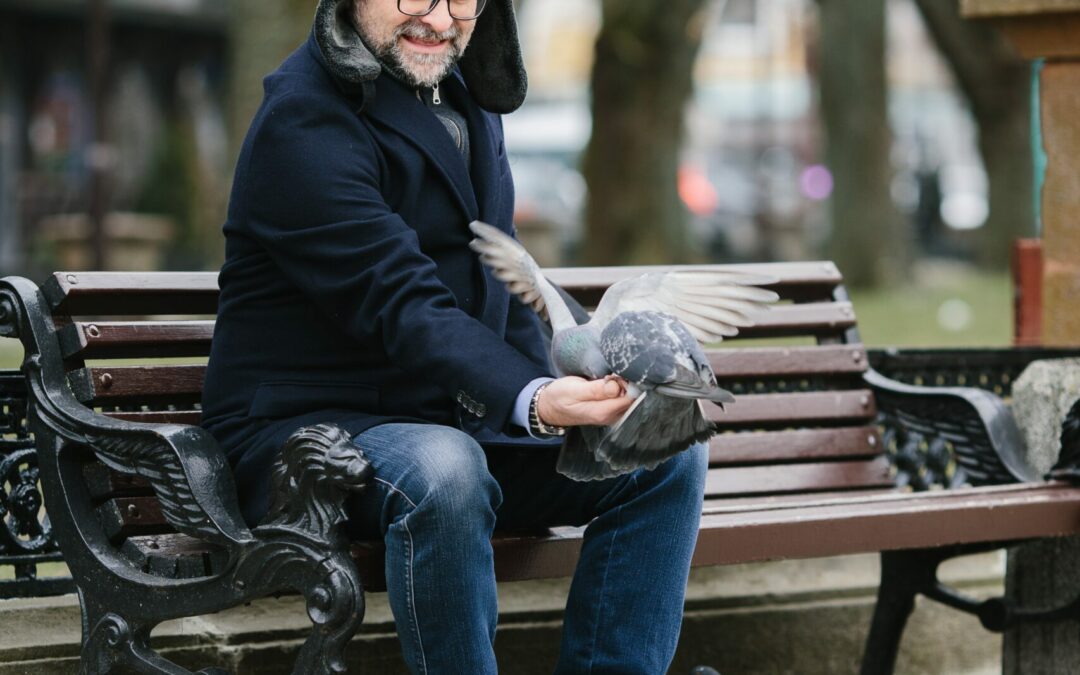
by Pigeon Patrol | Jun 8, 2025 | Bird Law, Bird Trap, Pigeon Control, Pigeon Droppings, Pigeon Patrol's Services
Commuters at the Jackson CTA Station experienced unusual delays this morning—not because of technical malfunctions, but because of an unexpected menace: pigeon droppings.
Two riders slipped and fell on the southbound platform around 8 a.m., prompting a temporary halt in service while janitorial crews responded. No major injuries were reported, but the incident has raised questions about safety and sanitation in public transit spaces.
“The smell hits you first,” said Mark Ellis, a daily commuter. “Then you see the mess—droppings everywhere. Benches, railings, even the signs. It’s gotten out of hand.”
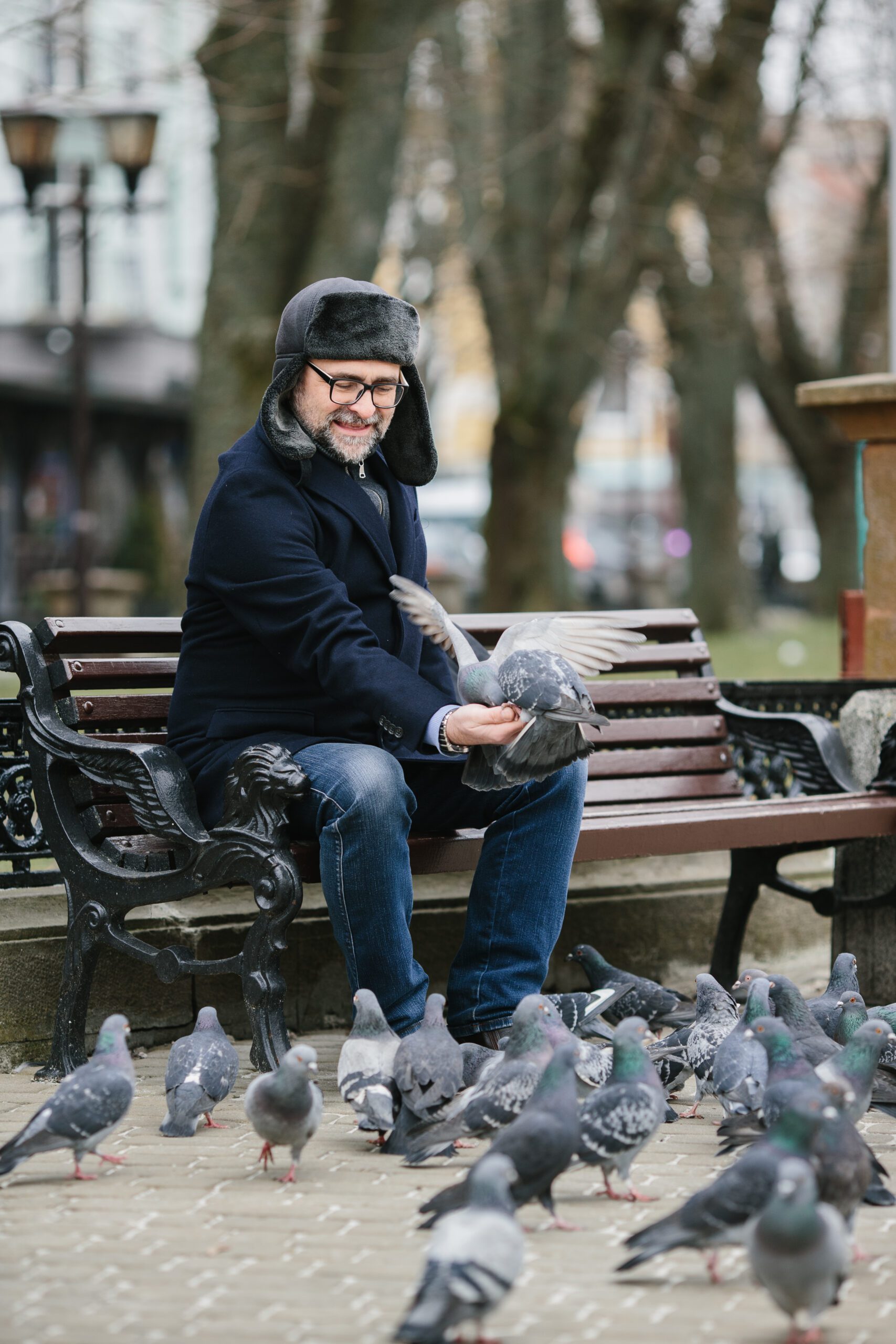
An elderly man enjoys a cold winter morning in the city.
Transit authorities said the problem has been building for months. Pigeons roost in the station’s rafters, undeterred by current pest control measures. According to CTA spokesperson Nia Harrell, “We’re working on a long-term plan that includes physical deterrents, more frequent cleanings, and consultation with pest control specialists.”
Harrell added that the CTA is exploring ethical deterrent methods like reflective strips, ultrasonic devices, and even using trained birds of prey in partnership with local falconers.
Pigeon Patrol Products & Services is the leading manufacturer and distributor of bird deterrent (control) products in Canada. Pigeon Patrol products have solved pest bird problems in industrial, commercial, and residential settings since 2000, by using safe and humane bird deterrents with only bird and animal -friendly solutions. At Pigeon Patrol, we manufacture and offer a variety of bird deterrents, ranging from Ultra-flex Bird Spikes with UV protection, Bird Netting, 4-S Bird Gel and the best Ultrasonic and audible sound devices on the market today.
Best Types of Pigeon Repellent
- Bird Spikes– Pigeons can’t land on surfaces with bird spikes—perfect for ledges, sills, signs, and fences.
Shop Bird Spikes: https://www.pigeonpatrol.ca/bird-spikes/
- Bird Sound Deterrents / Ultrasonic Repellers– Emit high-frequency sound to drive pigeons away without harming them.
Browse Ultrasonic Bird Repellers: https://www.pigeonpatrol.ca/bird-repeller/
- Pigeon Netting– Blocks pigeons from accessing nesting zones permanently.
See Pigeon Netting: https://www.pigeonpatrol.ca/bird-netting/
Canada’s top wholesaler for bird deterrent products for twelve consecutive years.
Contact us at 1- 877– 4– NO-BIRD, (604) 585-9279 or visit our website at https://www.pigeonpatrol.ca/
Bird Gone, Pigeon Gone, Pigeon problems, pigeon spikes, 1-877-4NO-BIRD, 4-S Gel, Bird Control, Pigeon Control, bird repellent, Bird Spikes, sonic bird repellent, stainless steel bird spikes, bird spikes Vancouver, Ultra Sonic Bird Control, Bird Netting, Plastic Bird Spikes, Canada bird spike deterrents, Pigeon Pests, B Gone Pigeon, Pigeon Patrol, pest controller, pest control operator, pest control technician, Pigeon Control Products, humane pigeon spikes, pigeon deterrents, pigeon traps, Pigeon repellents, Sound & Laser Deterrents, wildlife control, raccoon, skunk, squirrel deterrent, De-Fence Spikes, Dragons Den, Pigeon, Pigeon Patrol, Pigeons Roosting, Vancouver Pigeon Control, Bird Spikes, Bird Control, Bird Deterrent, Pigeon Deterrent, Surrey Pigeon Control, Pest, Seagull deterrent Vancouver Pigeon Blog, Birds Inside Home De-fence, Pigeon Nesting, Bird Droppings, Pigeon Dropping, woodpecker control, Keep The Birds Away, Birds/rats, seagull, pigeon, woodpecker, dove, sparrow, pidgeon control, pidgeon problem, pidgeon control, flying rats, pigeon Problems, bird netting, bird gel, bird spray, bird nails, bird guard, Pigeon control, Bird deterrents, Pigeon deterrents, Bird control, solutions, Pigeon prevention, Pigeon repellent, Bird proofing, Pest bird management, Pigeon spikes, Bird netting, Humane bird control, Bird exclusion, Urban bird control, Anti-roosting devices, Pigeon removal, Bird barriers
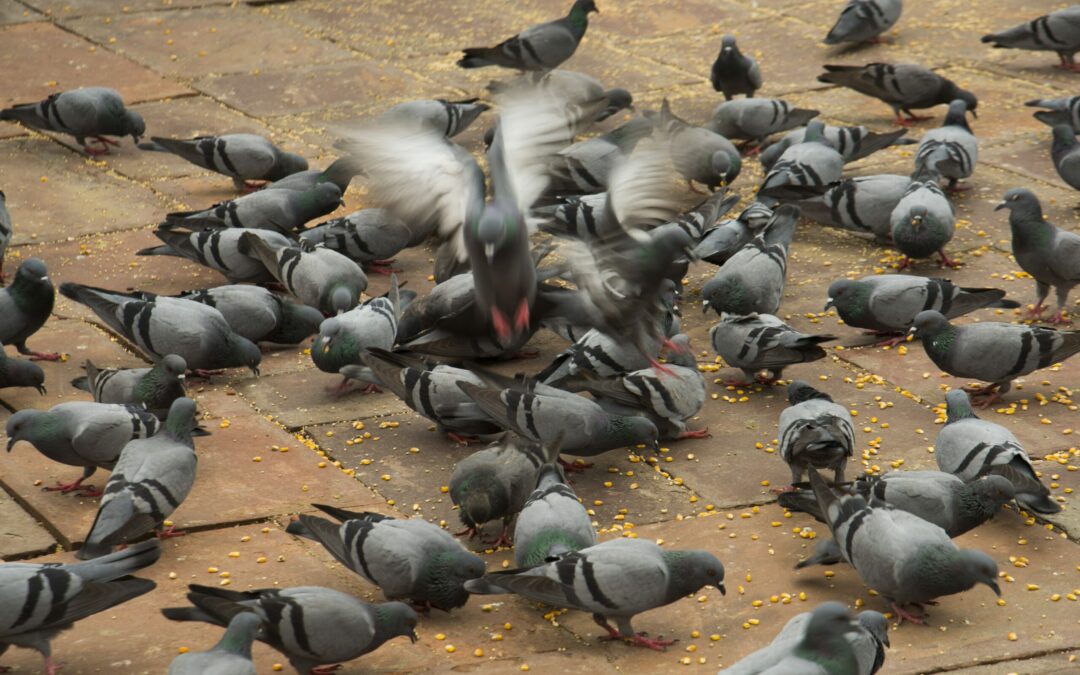
by Pigeon Patrol | Jun 8, 2025 | Bird Deterrent Products, Pigeon Control, Pigeon Droppings, Pigeon Patrol's Services
Roosevelt Middle School is facing a crisis that has nothing to do with test scores or staffing—it’s pigeons. Dozens of the birds have taken up residence on the school roof, leaving droppings throughout outdoor hallways, handrails, and the student quad.
“I’m scared my daughter will catch something,” said Delia Morales, mother of a 6th grader. “They eat lunch out there! There’s poop on the tables every day.”
The school’s janitorial staff reports spending hours daily trying to hose down surfaces before students arrive. Despite this, children have reportedly stepped in droppings, and some even reported seeing pigeons nesting inside a broken roof vent near the gymnasium.
Principal Tom Ferris acknowledged the growing concerns at a PTA meeting last Thursday. “We’re requesting emergency funds to install bird netting and roof barriers,” he said. “We’re also consulting with environmental safety inspectors to make sure there’s no health risk.”
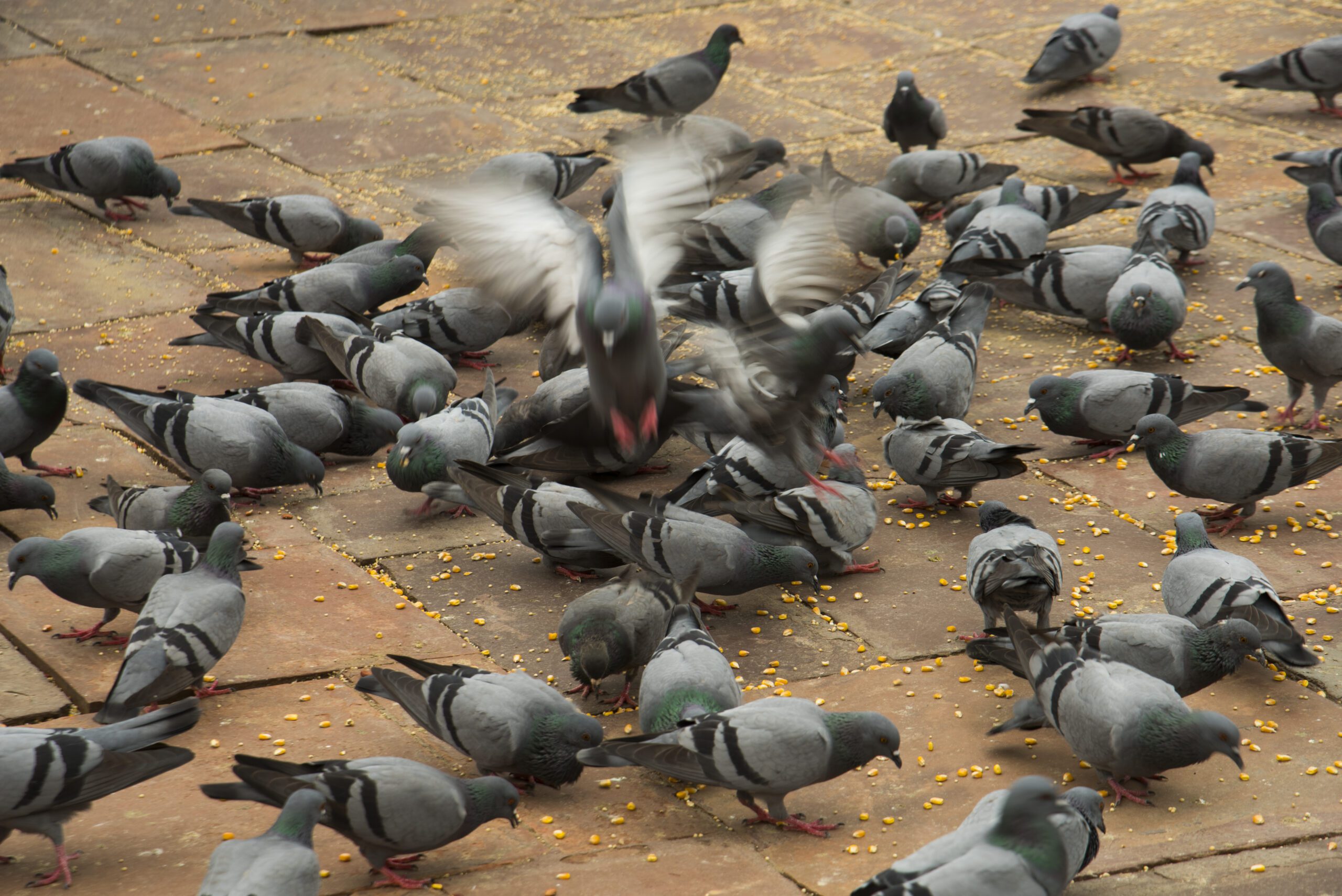
lots of pigeons gathering for food
Parents are organizing a volunteer cleanup day while pushing the district to take faster action. “This isn’t just a nuisance anymore—it’s a hazard,” said PTA President Carla Hsu.
Pigeon Patrol Products & Services is the leading manufacturer and distributor of bird deterrent (control) products in Canada. Pigeon Patrol products have solved pest bird problems in industrial, commercial, and residential settings since 2000, by using safe and humane bird deterrents with only bird and animal -friendly solutions. At Pigeon Patrol, we manufacture and offer a variety of bird deterrents, ranging from Ultra-flex Bird Spikes with UV protection, Bird Netting, 4-S Bird Gel and the best Ultrasonic and audible sound devices on the market today.
Best Types of Pigeon Repellent
- Bird Spikes– Pigeons can’t land on surfaces with bird spikes—perfect for ledges, sills, signs, and fences.
Shop Bird Spikes: https://www.pigeonpatrol.ca/bird-spikes/
- Bird Sound Deterrents / Ultrasonic Repellers– Emit high-frequency sound to drive pigeons away without harming them.
Browse Ultrasonic Bird Repellers: https://www.pigeonpatrol.ca/bird-repeller/
- Pigeon Netting– Blocks pigeons from accessing nesting zones permanently.
See Pigeon Netting: https://www.pigeonpatrol.ca/bird-netting/
Canada’s top wholesaler for bird deterrent products for twelve consecutive years.
Contact us at 1- 877– 4– NO-BIRD, (604) 585-9279 or visit our website at https://www.pigeonpatrol.ca/
Bird Gone, Pigeon Gone, Pigeon problems, pigeon spikes, 1-877-4NO-BIRD, 4-S Gel, Bird Control, Pigeon Control, bird repellent, Bird Spikes, sonic bird repellent, stainless steel bird spikes, bird spikes Vancouver, Ultra Sonic Bird Control, Bird Netting, Plastic Bird Spikes, Canada bird spike deterrents, Pigeon Pests, B Gone Pigeon, Pigeon Patrol, pest controller, pest control operator, pest control technician, Pigeon Control Products, humane pigeon spikes, pigeon deterrents, pigeon traps, Pigeon repellents, Sound & Laser Deterrents, wildlife control, raccoon, skunk, squirrel deterrent, De-Fence Spikes, Dragons Den, Pigeon, Pigeon Patrol, Pigeons Roosting, Vancouver Pigeon Control, Bird Spikes, Bird Control, Bird Deterrent, Pigeon Deterrent, Surrey Pigeon Control, Pest, Seagull deterrent Vancouver Pigeon Blog, Birds Inside Home De-fence, Pigeon Nesting, Bird Droppings, Pigeon Dropping, woodpecker control, Keep The Birds Away, Birds/rats, seagull, pigeon, woodpecker, dove, sparrow, pidgeon control, pidgeon problem, pidgeon control, flying rats, pigeon Problems, bird netting, bird gel, bird spray, bird nails, bird guard, Pigeon control, Bird deterrents, Pigeon deterrents, Bird control, solutions, Pigeon prevention, Pigeon repellent, Bird proofing, Pest bird management, Pigeon spikes, Bird netting, Humane bird control, Bird exclusion, Urban bird control, Anti-roosting devices, Pigeon removal, Bird barriers
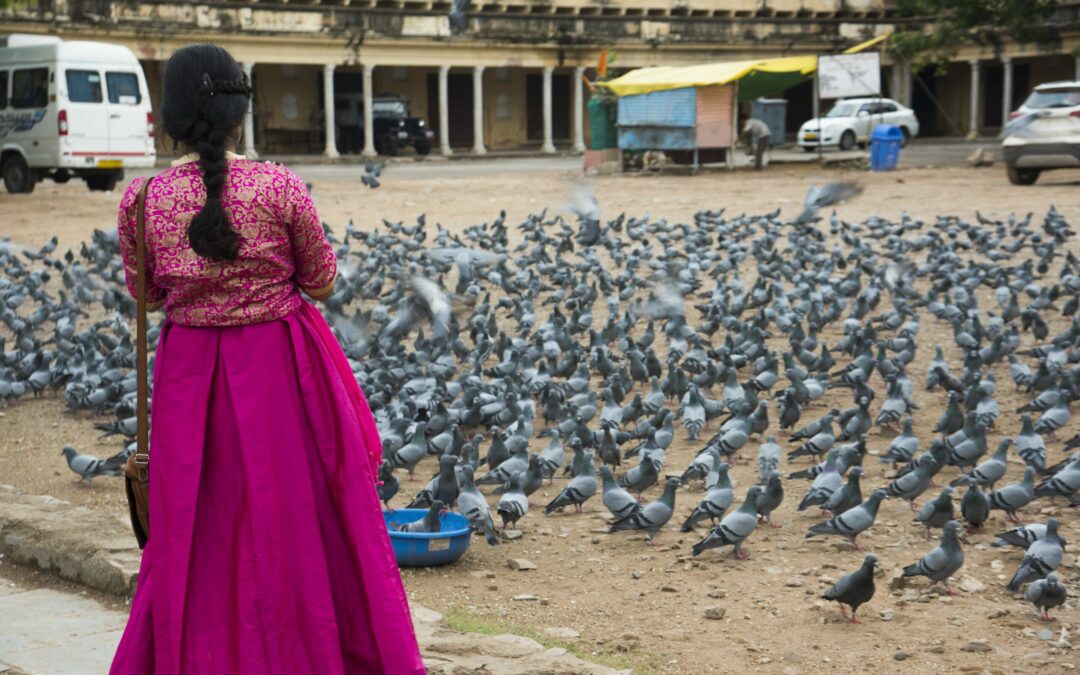
by Pigeon Patrol | Jun 8, 2025 | Bird Deterrent Products, Bird Spikes, Pigeon Control, Pigeon Droppings
Portland’s outdoor dining renaissance is facing a surprising adversary: pigeons. In the trendy Pearl District, restaurant owners are reporting a surge in droppings on tables, chairs, and patios—forcing some to close outdoor sections during peak hours.
“It’s costing us money,” said Daniel Nguyen, owner of Nest Café. “We had to throw out six tablecloths in one day. And when guests get hit mid-meal, they don’t exactly come back.”
Birds roost on streetlights and awnings overhead, raining down waste during lunch and dinner hours. The problem has become so visible that several restaurant owners are banding together to form a “Pigeon Patrol” task force to lobby the city for help.
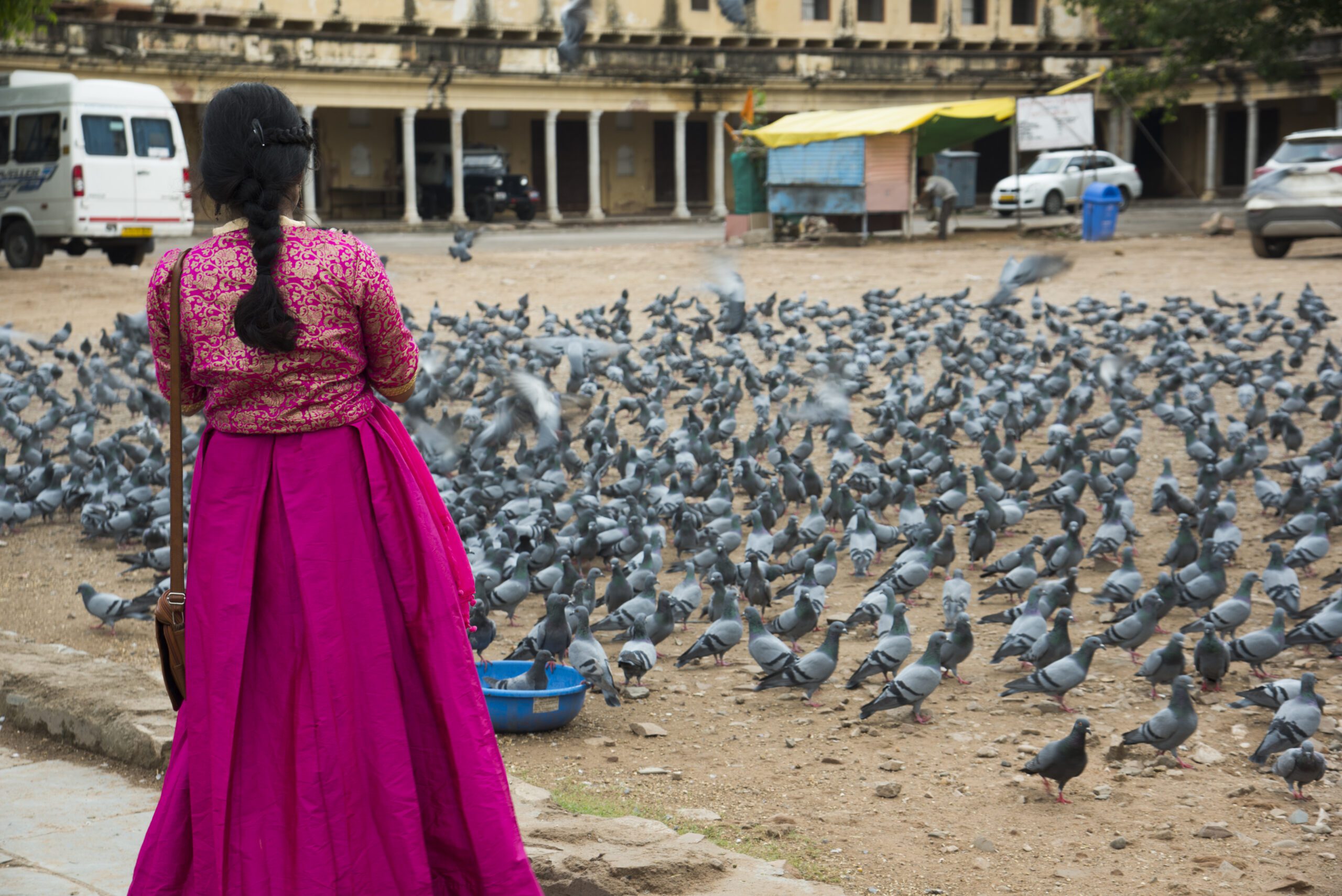
Pigeon Ohhh NO!!
A pilot project involving trained falcons is already underway in a nearby neighborhood, and Pearl District restaurateurs are hoping to be next. “It sounds dramatic, but it works,” said Susan Albrecht, who owns a bakery down the block. “The moment those falcons show up, the pigeons scatter.”
For now, staff are keeping hoses, disinfectants, and umbrellas close at hand. But many agree: a long-term fix is urgently needed before the poop problem affects tourism—and reputations.
Pigeon Patrol Products & Services is the leading manufacturer and distributor of bird deterrent (control) products in Canada. Pigeon Patrol products have solved pest bird problems in industrial, commercial, and residential settings since 2000, by using safe and humane bird deterrents with only bird and animal -friendly solutions. At Pigeon Patrol, we manufacture and offer a variety of bird deterrents, ranging from Ultra-flex Bird Spikes with UV protection, Bird Netting, 4-S Bird Gel and the best Ultrasonic and audible sound devices on the market today.
Best Types of Pigeon Repellent
- Bird Spikes– Pigeons can’t land on surfaces with bird spikes—perfect for ledges, sills, signs, and fences.
Shop Bird Spikes: https://www.pigeonpatrol.ca/bird-spikes/
- Bird Sound Deterrents / Ultrasonic Repellers– Emit high-frequency sound to drive pigeons away without harming them.
Browse Ultrasonic Bird Repellers: https://www.pigeonpatrol.ca/bird-repeller/
- Pigeon Netting– Blocks pigeons from accessing nesting zones permanently.
See Pigeon Netting: https://www.pigeonpatrol.ca/bird-netting/
Canada’s top wholesaler for bird deterrent products for twelve consecutive years.
Contact us at 1- 877– 4– NO-BIRD, (604) 585-9279 or visit our website at https://www.pigeonpatrol.ca/
Bird Gone, Pigeon Gone, Pigeon problems, pigeon spikes, 1-877-4NO-BIRD, 4-S Gel, Bird Control, Pigeon Control, bird repellent, Bird Spikes, sonic bird repellent, stainless steel bird spikes, bird spikes Vancouver, Ultra Sonic Bird Control, Bird Netting, Plastic Bird Spikes, Canada bird spike deterrents, Pigeon Pests, B Gone Pigeon, Pigeon Patrol, pest controller, pest control operator, pest control technician, Pigeon Control Products, humane pigeon spikes, pigeon deterrents, pigeon traps, Pigeon repellents, Sound & Laser Deterrents, wildlife control, raccoon, skunk, squirrel deterrent, De-Fence Spikes, Dragons Den, Pigeon, Pigeon Patrol, Pigeons Roosting, Vancouver Pigeon Control, Bird Spikes, Bird Control, Bird Deterrent, Pigeon Deterrent, Surrey Pigeon Control, Pest, Seagull deterrent Vancouver Pigeon Blog, Birds Inside Home De-fence, Pigeon Nesting, Bird Droppings, Pigeon Dropping, woodpecker control, Keep The Birds Away, Birds/rats, seagull, pigeon, woodpecker, dove, sparrow, pidgeon control, pidgeon problem, pidgeon control, flying rats, pigeon Problems, bird netting, bird gel, bird spray, bird nails, bird guard, Pigeon control, Bird deterrents, Pigeon deterrents, Bird control, solutions, Pigeon prevention, Pigeon repellent, Bird proofing, Pest bird management, Pigeon spikes, Bird netting, Humane bird control, Bird exclusion, Urban bird control, Anti-roosting devices, Pigeon removal, Bird barriers
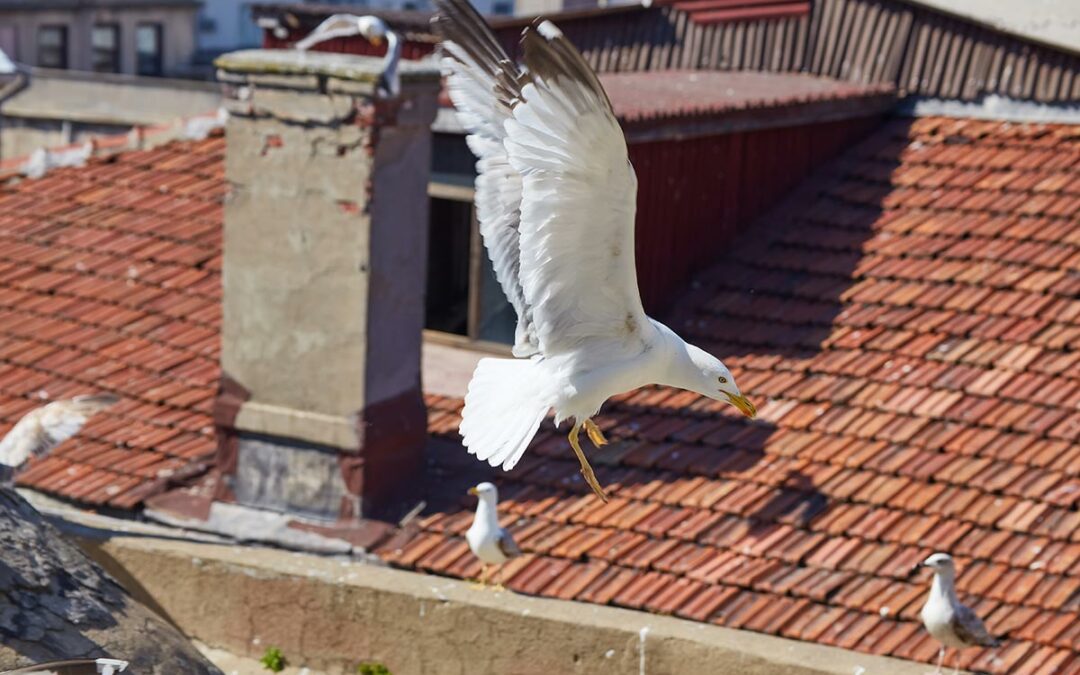
by Pigeon Patrol | Jun 4, 2025 | Animal Deterrent Products, Bird Deterrent Products, Bird Netting, Bird Spikes, Fence Spikes, Pigeon Control, Pigeon Patrol's Services, Pigeon Spikes, Pigeons, Sparrows, UltraSonic Bird Control
Pigeons are persistent birds—once they decide to roost, they can cause property damage, health hazards, and messy cleanup. The good news? You have lots of effective pigeon repellent options to choose from.
In this guide, we’ll cover the top pigeon repellents, when to use them, and how to combine products for the best results.
Best Types of Pigeon Repellent
- Bird Spikes – Pigeons can’t land on surfaces with bird spikes—perfect for ledges, sills, signs, and fences.
Shop Bird Spikes: https://www.pigeonpatrol.ca/bird-spikes/
- Bird Sound Deterrents / Ultrasonic Repellers – Emit high-frequency sound to drive pigeons away without harming them.
Browse Ultrasonic Bird Repellers: https://www.pigeonpatrol.ca/bird-repeller/
- Pigeon Netting – Blocks pigeons from accessing nesting zones permanently.
See Pigeon Netting: https://www.pigeonpatrol.ca/bird-netting/
Where to Apply Pigeon Repellents
- Residential properties—balconies, rooftops, window sills
- Commercial spaces—storefronts, parking garages, rooftops
- Industrial & agricultural buildings—warehouses, silos, barns
How to Combine Pigeon Repellents
- Bird spikes for landing prevention
- Pigeon net for blocking access
- Ultrasonic sound deterrents for wide-area repelling
- Add visual deterrents (reflective tape, predator decoys) for extra impact
What is the most effective pigeon repellent?
Bird spikes + netting + ultrasonic devices offer the most comprehensive protection.
Are pigeon repellents safe for other birds?
Yes—our products are designed to deter all pest birds humanely.
Choosing the right pigeon repellent depends on your property, level of infestation, and budget. Often, the best solution is a multi-layered approach using spikes, netting, and sound deterrents.
Shop the best pigeon repellents today at: https://www.pigeonpatrol.ca
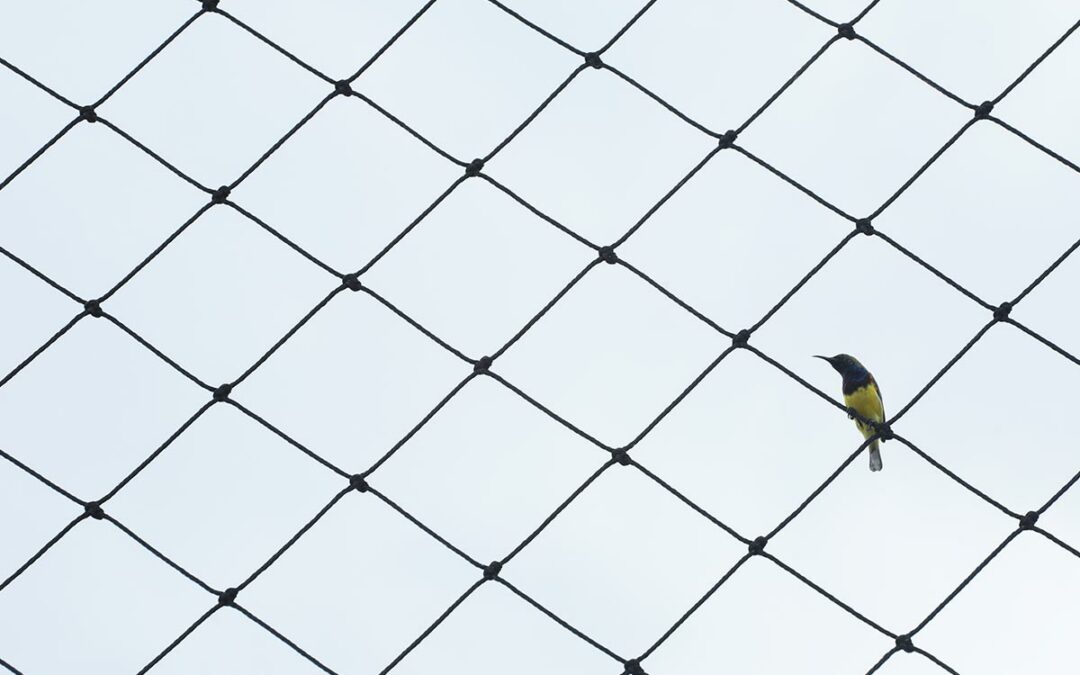
by Pigeon Patrol | Jun 4, 2025 | Animal Deterrent Products, Bird Deterrent Products, Bird Netting, Pigeon Control, Pigeon Patrol's Services, Pigeons, Sparrows
If you want to stop pigeons from nesting entirely, a pigeon net is one of the most reliable and long-lasting solutions. Bird netting physically blocks birds from accessing protected spaces—without harming them.
In this guide, you’ll learn when to use pigeon netting, how it works, and which areas of your property will benefit most from this type of bird control.
What Is Pigeon Netting?
Pigeon netting is UV-stabilized mesh designed to keep birds out of specific areas: balconies, rooftops, parking garages, and commercial spaces.
Shop Bird Netting: https://www.pigeonpatrol.ca/bird-netting/
Benefits of Pigeon Netting
- 100% humane—prevents nesting without harming birds
- Durable—withstands rain, snow, wind, UV rays
- Discreet appearance—nearly invisible from a distance
- Protects large or oddly shaped areas
- Low-maintenance & long-lasting
Where to Install Pigeon Netting
- Balconies & patios
- Roof overhangs & HVAC units
- Parking garages & warehouses
- Solar panels
- Under building signage
How to Install Pigeon Netting
- Inspect the area & measure dimensions
- Install anchor points (eye bolts or brackets)
- Stretch net taut across opening
- Seal edges with zip ties or clips
- Check for gaps to ensure birds can’t sneak in
Is pigeon netting permanent?
Yes—when installed correctly, netting can last 5–10+ years.
Can pigeons break through netting?
No—Pigeon Patrol’s netting is heavy-duty and pigeon-proof.
A pigeon net is one of the most effective bird control products for keeping spaces 100% bird-free. For large commercial properties or high-infestation zones, netting is a must.
Explore pigeon netting solutions at: https://www.pigeonpatrol.ca/bird-netting/
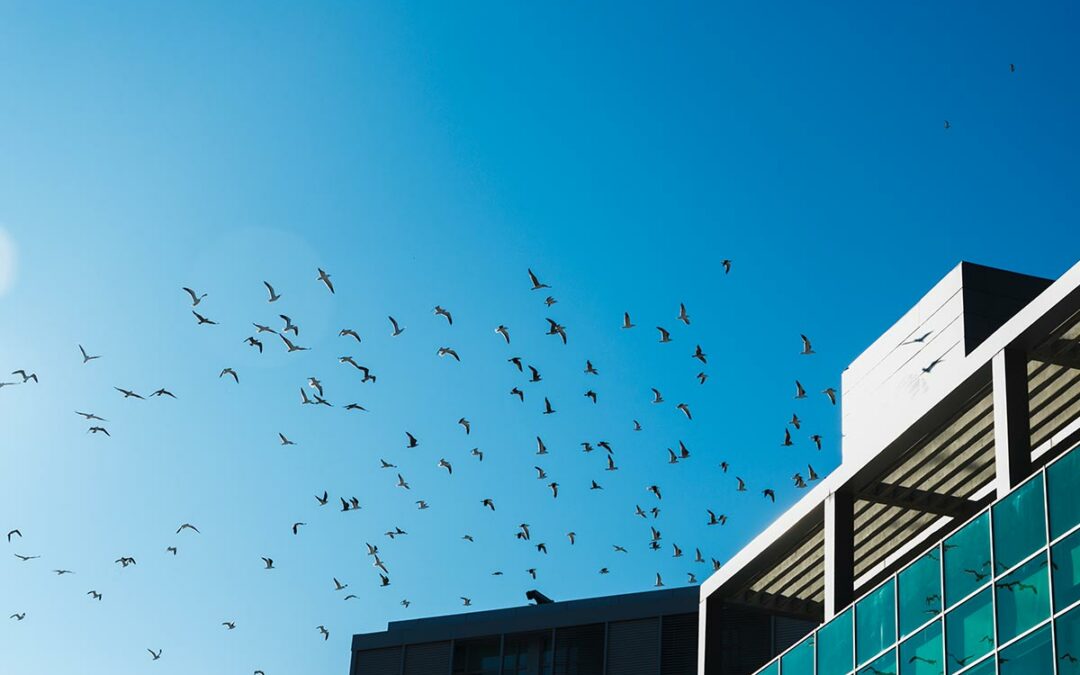
by Pigeon Patrol | Jun 4, 2025 | Animal Deterrent Products, Bird Deterrent Products, Pigeon Control, Pigeon Patrol's Services, Pigeons, Sound Deterrent, Sparrows, UltraSonic Bird Control
Want to repel birds without using physical barriers? A bird sound deterrent may be your best option. These devices work by emitting sounds that birds hate—from ultrasonic frequencies to predator calls—pushing them to leave and find a quieter place to roost.
In this guide, you’ll learn how sound-based bird control works, which types of devices are most effective, and how to combine sound deterrents with other solutions for long-term success.
How Do Bird Sound Deterrents Work?
There are two main types of bird sound deterrents:
- Ultrasonic Bird Deterrents – Emit high-frequency sound waves above human hearing (typically 20 kHz+) that irritate birds and disrupt communication.
Shop Ultrasonic Bird Repellers: https://www.pigeonpatrol.ca/bird-repeller/
- Acoustic Bird Deterrents – Play recordings of predator calls (hawks, falcons) or distress calls of birds, triggering a fear response.
Benefits of Bird Sound Deterrents
- Non-invasive & invisible
- 100% humane
- Safe for people and pets
- Covers wide areas (good for rooftops, balconies, gardens)
- Works on multiple bird species (pigeons, sparrows, seagulls, crows)
Where to Use Bird Sound Deterrents
- Balconies & Rooftops
- Storefronts
- Outdoor patios
- Airports & hangars
- Factories & warehouses
- Agricultural fields
Tips for Maximum Effectiveness
- Use sound deterrents with physical barriers like bird spikes or bird netting
- Change sound patterns regularly to prevent birds from getting used to the noise
- Move devices occasionally for dynamic coverage
Are sound bird deterrents safe for pets?
Yes—ultrasonic models are generally safe for dogs and cats.
Do sound deterrents work for pigeons?
Yes—pigeons hate ultrasonic frequencies and predator calls.
Bird sound deterrents are a smart, humane way to discourage pest birds. For best results, pair sound deterrents with physical products like spikes and netting from Pigeon Patrol.
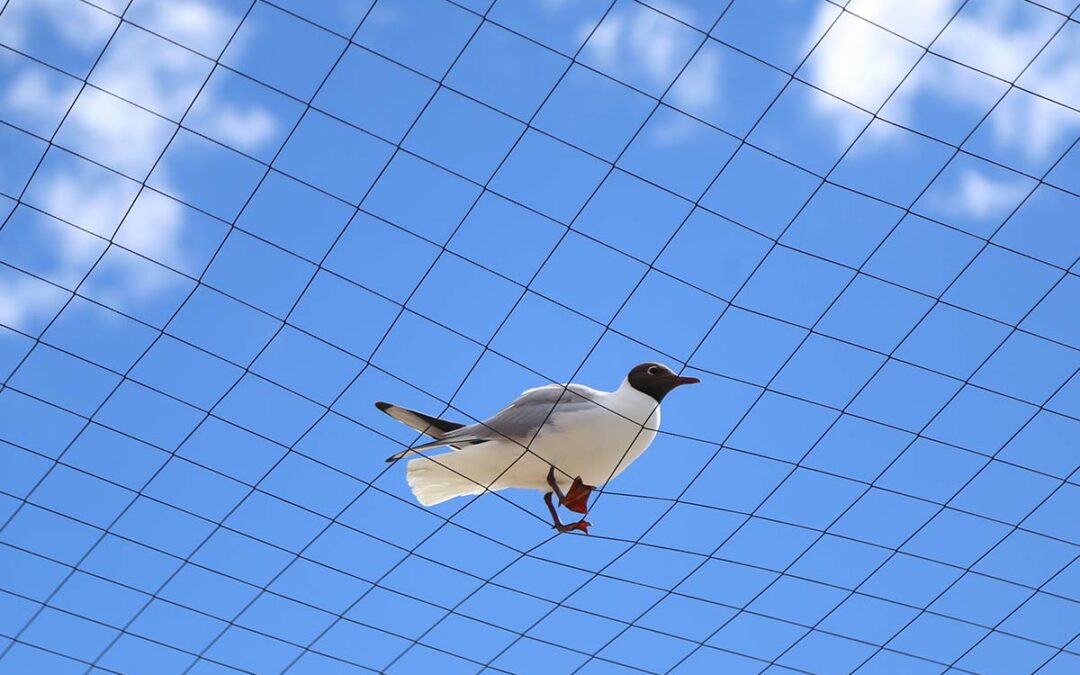
by Pigeon Patrol | Apr 30, 2025 | Animal Deterrent Products, Bird Deterrent Products, Bird Spike, Bird Trap, Pigeon Control, Pigeon Patrol's Services, Pigeon Spikes, Pigeons, Sparrows
Unwanted birds on your roof, signs, balconies, or vents can go from annoying to damaging very quickly. Bird control is essential for keeping your property clean, safe, and structurally sound—without causing harm to the birds.
In this article, we’ll walk you through the most effective bird control strategies, when to use them, and how to select the right products to protect your property from pigeons, seagulls, sparrows, and more.
Why Is Bird Control Necessary?
1. Prevent Property Damage
Birds may be light, but their damage is heavy:
- Acidic droppings corrode metal, paint, and concrete.
- Nesting debris clogs gutters and damages HVAC units.
- Woodpeckers can drill into siding and cause rot.
2. Reduce Health Risks
Bird droppings carry over 60 transmittable diseases, including:
- Histoplasmosis
- Cryptococcosis
- E. coli
3. Improve Cleanliness & Aesthetics
Bird infestations create a messy, foul-smelling environment for visitors, tenants, or customers.
Top Bird Control Methods That Work
1. Bird Spikes – The Physical Barrier
Bird spikes create an unwelcoming surface that makes it impossible for birds to land or roost.
Ideal for:
- Window sills
- Rooftops
- Ledges
- Signs
Get Bird Spikes Here: https://www.pigeonpatrol.ca/bird-spikes/
3. Bird Netting – Area-Wide Protection
Bird netting is perfect for blocking access to covered spaces.
Ideal for:
- Balconies
- Loading docks
- Solar panels
- Warehouse ceilings
Shop Bird Netting: https://www.pigeonpatrol.ca/bird-netting/
4. Ultrasonic Bird Repellers – Tech Meets Nature
These electronic devices emit high-frequency sounds that are disturbing to birds but silent to humans.
Ideal for:
- Residential patios
- Outdoor seating
- Rooftop HVAC units
Browse Ultrasonic Repellers: https://www.pigeonpatrol.ca/bird-repeller/
Bird Control Services for Different Properties
Residential Bird Control
Protect your home, attic, balcony, or garden from unwanted birds. Recommended solutions:
- Bird spikes on window sills
- Netting under solar panels
- Motion-activated sound deterrents
Commercial Bird Control
Keep storefronts, signage, awnings, and entryways free of birds to maintain a clean, professional image.
- Install spikes on signs
- Use netting in open rafters
- Install repellers near parking lots
Industrial and Agricultural Bird Control
Large facilities require a combination of deterrents:
- Warehouse netting
- Grain silo protection
- Rooftop barriers and sound repellers
Types of Birds That Require Control
- Pigeons – Nest on rooftops, ledges, and balconies
- Seagulls – Common near coastal areas and landfills
- Sparrows & Starlings – Nest in vents and overhangs
- Woodpeckers – Damage wood siding and trees
- Crows & Magpies – Raid garbage and food courts
How to Choose the Right Bird Control Product
| Problem Area |
Recommended Solution |
| Rooftop or Ledge |
Bird Spikes |
| Large Covered Space |
Bird Netting |
| Outdoor Seating |
Ultrasonic Repeller |
| Fence or Balcony Railing |
Fence Spikes |
| Persistent Infestation |
Pigeon Trap |
💡 Tip: Combine two or more products for maximum effectiveness.
What is the most effective bird deterrent?
Bird spikes and netting are the most reliable physical barriers, especially when combined with ultrasonic devices.
How long do bird control systems last?
High-quality systems like those from Pigeon Patrol are built to last 5–10+ years with proper installation.
Are bird control solutions safe for children and pets?
Yes! Our deterrents are non-toxic, humane, and pet-safe.
Can I install bird control products myself?
Yes, many products like spikes and ultrasonic devices are DIY-friendly, but netting and large systems are best professionally installed.
Bird control is more than just stopping birds—it’s about protecting your property, reputation, and peace of mind. From pigeon-proofing your rooftop to installing ultrasonic repellents in your garden, Pigeon Patrol offers everything you need to stop birds humanely and permanently.

by Pigeon Patrol | Apr 30, 2025 | Animal Deterrent Products, Bird Deterrent Products, Bird Spike, Bird Trap, Pigeon Control, Pigeon Patrol's Services, Pigeon Spikes, Pigeons, Sparrows
Birds might be beautiful in the wild—but not when they’re roosting on your roof, business sign, or solar panels. Whether you’re a homeowner dealing with pigeons or a commercial property manager dealing with a larger infestation, professional bird control services are your best defense against property damage, health risks, and daily mess.
This guide will show you how bird control services can help and which deterrent solutions are best for long-term prevention.
Why Bird Control Services Are Important
1. Birds Cause Expensive Property Damage
From clogged gutters to corroded paint and broken roof tiles, pigeon and seagull droppings are acidic and incredibly destructive.
2. Health Hazards from Droppings and Nests
Birds carry parasites, bacteria, and fungi. A build-up of droppings can lead to:
- Histoplasmosis
- Salmonella
- Cryptococcosis
3. Businesses Suffer Image and Revenue Losses
No customer wants to walk under a bird-infested awning. Droppings, noise, and feathers drive away foot traffic and create bad impressions.
What Do Bird Control Services Include?
1. Site Inspection & Risk Assessment
Experts assess where birds are roosting or nesting, identify entry points, and evaluate what type of deterrent is needed.
Ultrasonic Bird Repellers
Silent and discreet, these devices emit sound frequencies that annoy and repel birds without bothering people or pets.
Check Out Ultrasonic Repellers: https://www.pigeonpatrol.ca/bird-repeller/
Bird Control Services for Different Properties
Residential Bird Control
Protect your home, attic, balcony, or garden from unwanted birds. Recommended solutions:
- Bird spikes on window sills
- Netting under solar panels
- Motion-activated sound deterrents
Commercial Bird Control
Keep storefronts, signage, awnings, and entryways free of birds to maintain a clean, professional image.
- Install spikes on signs
- Use netting in open rafters
- Install repellers near parking lots
Industrial and Agricultural Bird Control
Large facilities require a combination of deterrents:
- Warehouse netting
- Grain silo protection
- Rooftop barriers and sound repellers
Common Bird Species We Handle
- Pigeons – The #1 urban pest bird
- Seagulls – Aggressive near coastlines and food courts
- Starlings & Sparrows – Nest in vents and eaves
- Woodpeckers – Cause damage to wooden siding
We even offer specific deterrents like the Woodpecker Deterrent Kit
Are your bird control products safe for pets and children?
Yes! All of our deterrents are non-toxic and pet-friendly.
Do I need professional installation?
We recommend professional installation for netting and ultrasonic devices, but many products are DIY-friendly.
Can I use bird control services in winter?
Absolutely. In fact, winter is a great time to prepare for spring nesting season.
If you’re tired of bird droppings, nesting mess, or constant cleaning—it’s time to call the experts. Bird control services provide lasting protection, safeguard your health, and preserve your property’s value. Whether you’re in residential, commercial, or industrial spaces, Pigeon Patrol has a solution tailored to your needs.
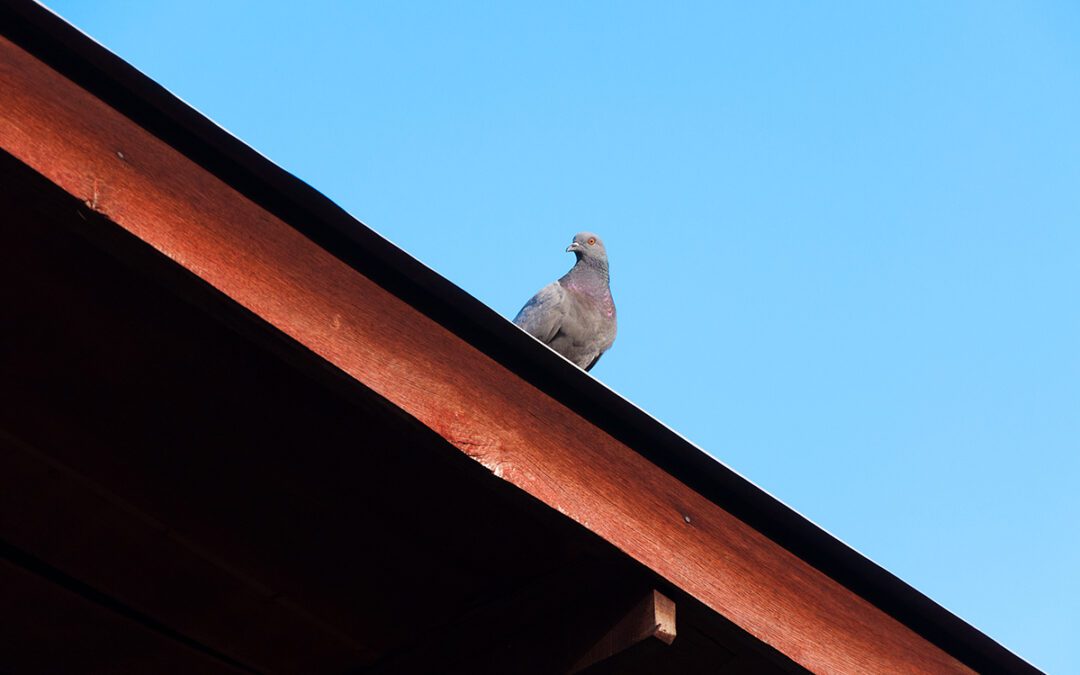
by Pigeon Patrol | Apr 30, 2025 | Animal Deterrent Products, Bird Deterrent Products, Bird Spike, Bird Trap, Pigeon Control, Pigeon Patrol's Services, Pigeon Spikes, Pigeons, Sparrows
You’ve likely heard them cooing, seen the droppings, or watched them strut across your rooftop like they own the place. Pigeons love roofs, and once they settle in, they can cause serious property damage, health hazards, and noise pollution. The good news? There are effective and humane methods to get rid of pigeons on your roof—and keep them away.
Let’s walk you through the best pigeon control strategies, the tools you’ll need, and how to pigeon-proof your roof for good.
Why Pigeons Choose Roofs to Roost
- Elevated & Safe
Roofs give pigeons a great vantage point to spot food, avoid predators, and nest in peace.
- Warm and Dry
Roof vents, eaves, and solar panels offer sheltered nesting areas year-round.
- Access to Nearby Food
Urban rooftops are usually near dumpsters, restaurants, and gardens, making them pigeon hotspots.
The Problems Pigeons Cause on Roofs
- Corrosive Droppings – Their acidic waste eats through shingles, solar panels, and metal fixtures.
- Blocked Gutters – Nesting materials clog drainage, causing leaks and water damage.
- Fire Hazards – Pigeons nest in vents and chimneys, increasing fire risks.
- Health Risks – Droppings spread harmful bacteria, fungi, and parasites.
How to Get Rid of Pigeons on Roof – Step-by-Step
Step 1: Remove Food and Water Sources
Start by eliminating anything that attracts pigeons—open garbage bins, bird feeders, standing water.
Step 3: Use Bird Netting to Block Nesting Areas
Install bird netting under eaves, solar panels, or awnings to keep pigeons from nesting.
Explore Bird Netting Options: https://www.pigeonpatrol.ca/bird-netting/
Tips for Long-Term Pigeon Prevention
- Inspect your roof regularly for signs of nesting or droppings.
- Seal roof openings and gaps where birds can enter.
- Reapply repellents or reposition decoys every few months to keep pigeons guessing.
- Work with professionals like Pigeon Patrol’s bird control experts for large infestations.
Will bird spikes hurt pigeons?
No. Bird spikes are designed to deter—not injure—pigeons. They’re 100% humane.
Do ultrasonic bird repellers work on roofs?
Yes. When mounted properly, ultrasonic devices can be highly effective for roof applications.
Can pigeons come back after deterrents are installed?
Not likely—if you install a combination of spikes, netting, and sound deterrents, pigeons will move elsewhere.
How often should I clean my roof to deter pigeons?
We recommend monthly inspections and cleaning, especially during nesting season (spring/summer).
What’s the best pigeon repellent for roof vents?
Use netting or spikes around roof vents to prevent nesting.
Getting rid of pigeons on your roof doesn’t have to be a nightmare. With the right tools—bird spikes, netting, ultrasonic devices, and fence spikes—you can protect your property humanely and effectively. Trust Pigeon Patrol, British Columbia’s leader in bird control solutions, to help you get the job done.
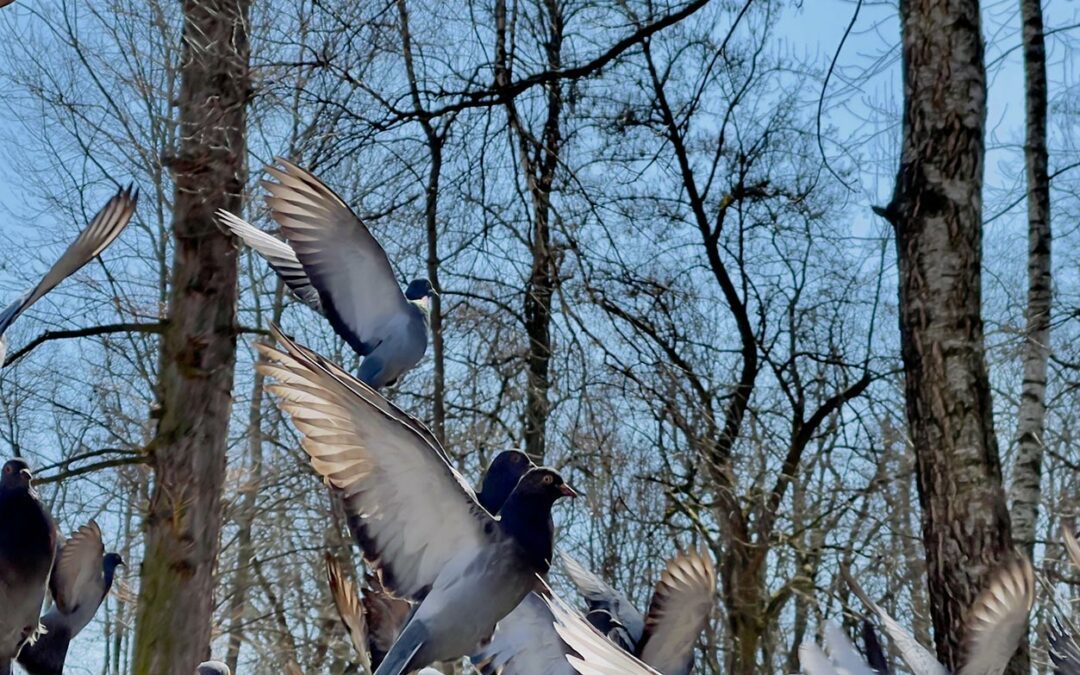
by Pigeon Patrol | Mar 18, 2025 | Animal Deterrent Products, Bird Deterrent Products, Bird Spike, Bird Trap, Pigeon Control, Pigeon Patrol's Services, Pigeon Spikes, Pigeons, Sparrows
Pigeons may seem harmless, but once they start nesting on your property, they can become a major nuisance. They leave droppings that corrode surfaces, spread diseases, and create an unsanitary environment. If you’re struggling with pigeon infestations, you need an effective pigeon bird repellent.
Luckily, there are several humane ways to repel pigeons and prevent them from returning. In this guide, we’ll explore:
- The best pigeon repellents available
- Where to apply pigeon deterrents
- How to keep pigeons away permanently
Why Pigeons Are a Problem
Pigeons are persistent birds that thrive in urban areas. Without proper deterrents, they can cause serious issues, including:
1. Property Damage
Pigeon droppings are acidic and can corrode paint, concrete, and metal surfaces. Over time, this can lead to structural damage on buildings, vehicles, and monuments.
2. Health Risks & Diseases
Pigeons carry bacteria and parasites that can lead to serious health issues, including:
- Histoplasmosis – A respiratory disease caused by fungal spores in pigeon droppings.
- Salmonella – A bacteria that can contaminate food and water sources.
- E. coli – Another bacterial infection spread through pigeon waste.
3. Nesting Problems
Pigeons often nest in gutters, vents, and chimneys, causing blockages that can lead to flooding, poor ventilation, and fire hazards.
4. Business Disruptions
For businesses, pigeons can create a dirty and unprofessional appearance, driving away customers and increasing cleaning costs.
Best Types of Pigeon Bird Repellents
1. Bird Repellent Spikes – The Most Effective Pigeon Deterrent
One of the most reliable pigeon repellents is bird spikes. These long, pointed strips are designed to prevent pigeons from landing on ledges, rooftops, and other common roosting areas.
How Bird Spikes Work:
- Create an uneven surface that makes it impossible for pigeons to perch.
- 100% humane – They don’t harm birds; they simply deter them.
- Weather-resistant – Made from stainless steel or durable plastic for long-lasting protection.
Get High-Quality Bird Spikes Here: https://www.pigeonpatrol.ca/bird-spikes/
2. Ultrasonic Bird Repellers – A Sound-Based Pigeon Deterrent
Ultrasonic bird repellers emit high-frequency sound waves that are irritating to pigeons but inaudible to humans. These devices are:
- Silent and discreet
- Ideal for balconies, garages, and gardens
- Effective for multiple bird species
Check Out Ultrasonic Bird Repellers: https://www.pigeonpatrol.ca/bird-repeller/
3. Bird Repellent Sprays – A Chemical-Free Pigeon Deterrent
Bird repellent sprays alter the texture and taste of surfaces, making them unappealing to pigeons. These sprays contain:
- Natural ingredients like peppermint oil and vinegar
- Non-toxic formulas that are safe for humans and pets
- Long-lasting protection for rooftops, patios, and windowsills
4. Reflective Bird Tape & Decoys
Pigeons are easily startled by sudden movement and shiny objects. Reflective bird tape and predator decoys (such as fake owls or hawks) can effectively scare pigeons away.
Best Uses:
- Hang reflective tape near windows, balconies, and patios.
- Move decoys regularly to prevent pigeons from realizing they’re fake.
Where to Apply Pigeon Repellents
To ensure maximum effectiveness, place pigeon repellents in high-risk areas, including:
1. Rooftops and Ledges
Pigeons love flat surfaces where they can perch safely. Use bird spikes or ultrasonic repellents on these areas.
2. Balconies and Windowsills
For apartment buildings and homes, install reflective tape, bird spikes, or ultrasonic devices to keep pigeons away.
3. Storefronts and Signs
Businesses often struggle with pigeons perching on signs and awnings. Bird spikes and repellent sprays can prevent pigeons from ruining storefront appearances.
4. Parking Lots and Warehouses
Larger spaces may require bird netting or motion-activated bird deterrents to protect vehicles and equipment.
Browse the Best Pigeon Repellents Here: https://www.pigeonpatrol.ca/
How to Keep Pigeons Away Permanently
Using a single pigeon repellent might not be enough for long-term results. Here’s how to ensure pigeons stay away for good:
Step 1: Identify Pigeon Entry Points
Look for nests, droppings, and feathers to determine where pigeons are roosting.
Step 2: Use Multiple Pigeon Deterrents
Combine bird spikes, ultrasonic repellents, and sprays for maximum effectiveness.
Step 3: Remove Food and Water Sources
Pigeons won’t leave if they have easy access to food. Keep garbage bins sealed, remove bird feeders, and clean up food scraps.
Step 4: Perform Regular Maintenance
Inspect and reapply repellents every few months to keep pigeons from returning.
What is the best pigeon repellent?
The most effective
pigeon repellents include:
- Bird spikes for ledges and rooftops
- Ultrasonic repellers for sound deterrence
- Repellent sprays for surfaces
How long does it take for pigeon repellents to work?
Most pigeon deterrents start working immediately, but it may take a few days for pigeons to learn to avoid the area.
Are pigeon repellents safe for pets and humans?
Yes! All repellents from Pigeon Patrol are 100% safe and humane.
Can I use multiple pigeon repellents together?
Yes! Combining repellents (like bird spikes + ultrasonic sound devices) is the most effective strategy.
Pigeon infestations can be frustrating, but with the right combination of bird repellents, you can protect your home, business, and property. Whether you choose bird spikes, ultrasonic deterrents, or repellent sprays, taking action now will keep pigeons away for good.
Shop the Best Pigeon Bird Repellents at Pigeon Patrol: https://www.pigeonpatrol.ca/
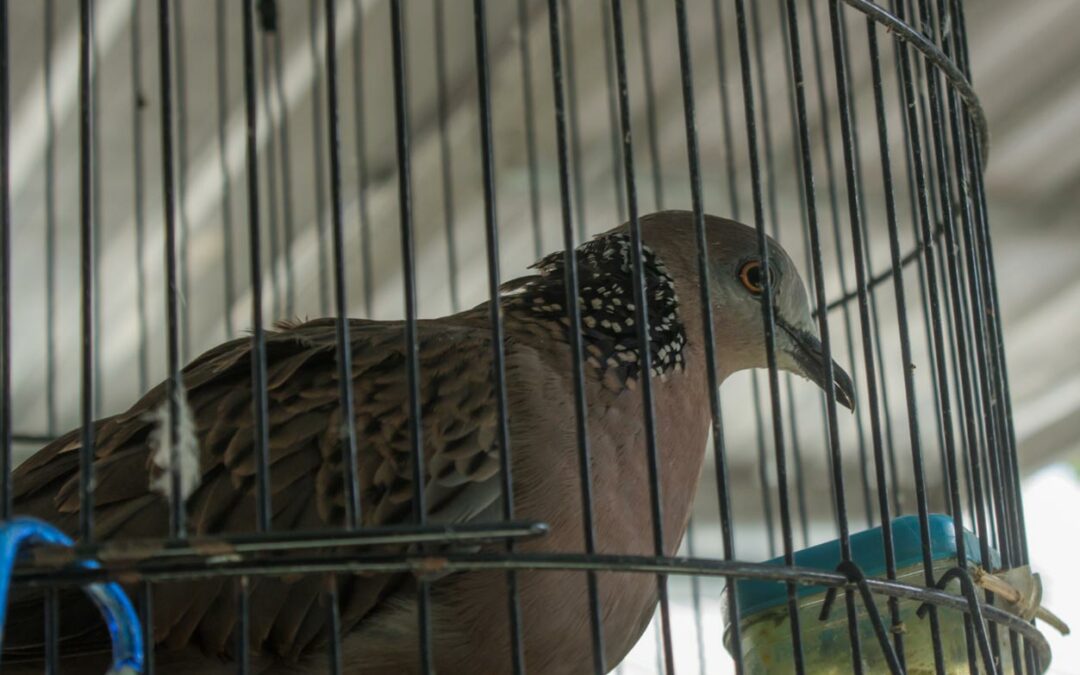
by Pigeon Patrol | Mar 18, 2025 | Animal Deterrent Products, Bird Deterrent Products, Bird Spike, Bird Trap, Pigeon Control, Pigeon Patrol's Services, Pigeon Spikes, Pigeons, Sparrows
If you’re dealing with a persistent pigeon infestation, deterrents like bird spikes and ultrasonic repellents might not be enough. In situations where pigeons have already established nests on your property, the most effective solution may be to trap and relocate them humanely.
Pigeon traps allow you to capture birds without harming them, making it easier to remove them from your property while complying with humane wildlife control laws.
In this guide, we’ll cover:
- What pigeon traps are and how they work
- The best types of traps for different situations
- Where to place traps for maximum effectiveness
- The best bait to use for pigeons
- How to properly relocate pigeons
What Are Pigeon Traps?
Pigeon traps are cage-like enclosures designed to capture birds without injury. These traps usually have one-way entry doors, allowing pigeons to enter for bait but preventing them from exiting.
How Do Pigeon Traps Work?
- Bait attracts pigeons into the trap.
- A one-way door closes behind them, ensuring they can’t escape.
- Once enough pigeons are captured, they can be safely relocated.
Browse High-Quality Pigeon Traps Here: https://www.pigeonpatrol.ca/pigeon-trapping-cages/
Types of Pigeon Traps
1. One-Way Entry Traps
These are the most common pigeon traps, featuring a one-way door that allows pigeons to enter but not exit. They are ideal for rooftops, balconies, and commercial buildings.
2. Multiple-Catch Cage Traps
These traps allow you to capture multiple pigeons at once and are useful for larger infestations. They are best for parks, warehouses, and large properties.
3. Drop-Down Traps
These traps are trigger-activated, meaning that when a pigeon steps on the platform, the door drops closed behind them.
Where to Place Pigeon Traps
Areas with Frequent Pigeon Activity
Pigeons return to the same areas where they feel safe. Place traps where pigeons are roosting or feeding, such as:
- Building ledges
- Residential balconies
- Storefronts & parking lots
Near Food Sources
Pigeons search for food constantly, so setting traps near:
- Garbage bins
- Public parks
- Fields & farmlands
How to Relocate Pigeons Humanely
Once you have captured the pigeons, follow these humane relocation steps:
- Transport them at least 5-10 km away to prevent them from returning.
- Release them near water and food sources so they can survive.
- Clean the trap thoroughly before reusing it.
Are pigeon traps legal?
Yes, as long as they are humane and comply with local wildlife laws.
How long can pigeons stay in a trap?
Check traps every 12-24 hours to ensure pigeons aren’t left for too long.
If you need to remove pigeons from your property, humane pigeon traps are one of the most effective solutions. Pairing traps with deterrents like bird spikes and ultrasonic repellents ensures pigeons stay away for good.
Get High-Quality Pigeon Traps Here: https://www.pigeonpatrol.ca/pigeon-trapping-cages/
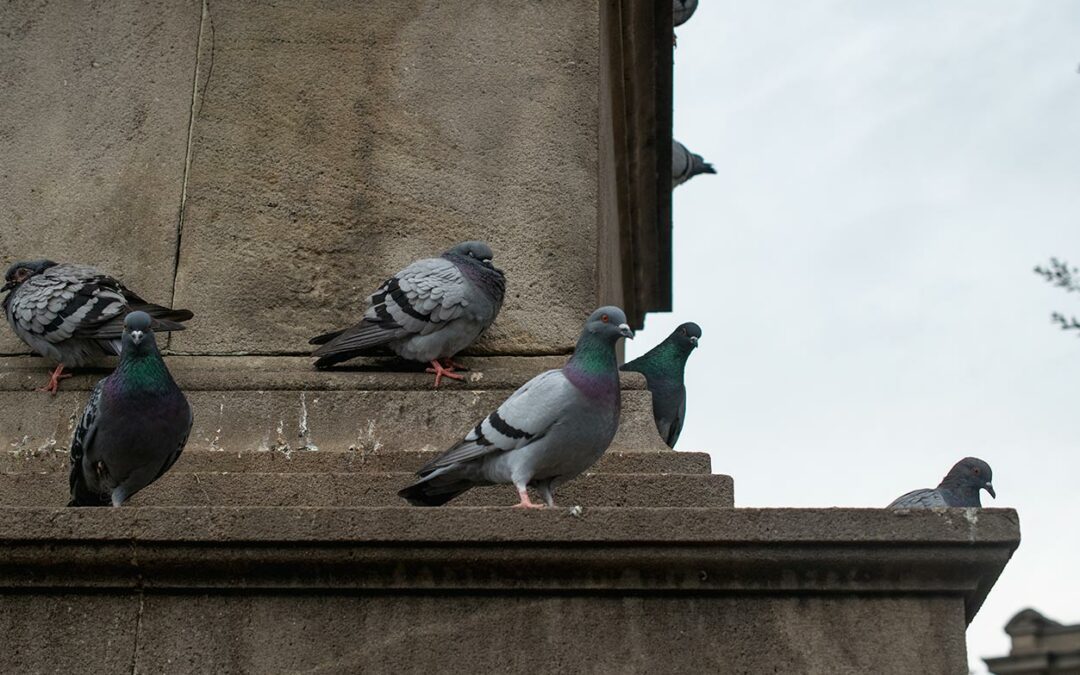
by Pigeon Patrol | Mar 18, 2025 | Animal Deterrent Products, Bird Deterrent Products, Bird Netting, Bird Spike, Bird Spikes, Pigeon Patrol's Services, Pigeon Spikes, Pigeons, Sparrows, UltraSonic Bird Control
Birds like pigeons can become a nuisance when they roost on buildings, damage property, and leave droppings everywhere. Traditional methods like netting and spikes work well, but if you’re looking for a modern, non-intrusive solution, an ultrasonic bird repeller might be the best option.
Ultrasonic bird repellers use high-frequency sound waves that humans can’t hear but are irritating to birds, making them seek another place to land. But is an ultrasonic bird repeller enough on its own? In this guide, we’ll explore ultrasonic deterrents and other effective bird control methods.
How Does an Ultrasonic Bird Repeller Work?
Ultrasonic bird repellers emit high-frequency sounds that disrupt birds’ ability to communicate and navigate. These devices:
- Are completely silent to humans
- Cover a wide area
- Work on multiple bird species
- Are low-maintenance and energy-efficient
Check Out Ultrasonic Bird Repellers: https://www.pigeonpatrol.ca/bird-repeller/
Other Effective Bird Repellent Methods
Motion-Activated Bird Repellers
Motion-activated devices use light, sound, or water jets to scare away pigeons and birds. These are great for gardens, rooftops, and open spaces.
Bird Spikes for Landing Prevention
Bird spikes prevent birds from perching and nesting. Install them on ledges, rooftops, and fences for long-term protection.
Explore Bird Spikes: https://www.pigeonpatrol.ca/bird-spikes/
Are ultrasonic bird repellers safe?
Yes! They do not harm birds, pets, or humans—only drive birds away.
Do ultrasonic repellers work in all weather?
Most devices are weatherproof but work best in dry conditions.
An ultrasonic bird repeller is a powerful, humane way to deter birds, but for maximum effectiveness, combine it with bird spikes, netting, or motion-activated deterrents.
Get the best bird control solutions at Pigeon Patrol today!
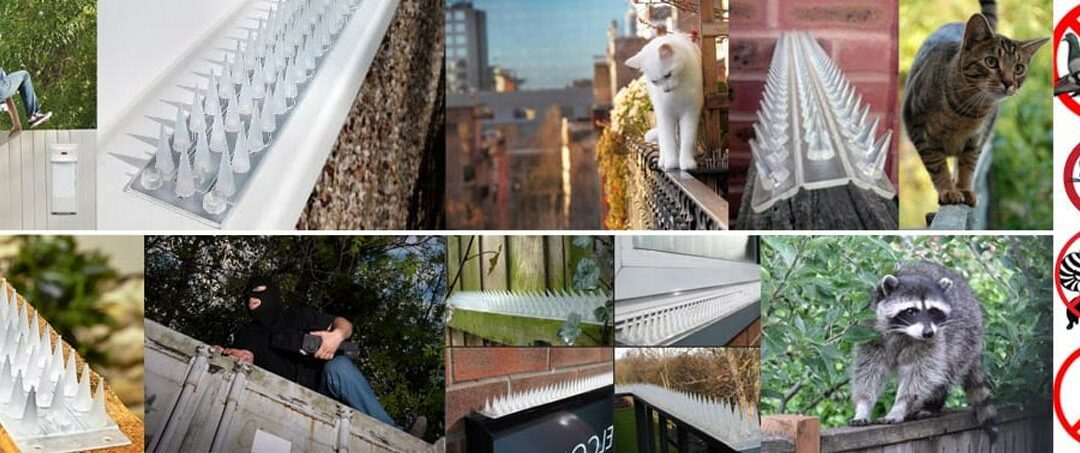
by Pigeon Patrol | Feb 10, 2025 | Animal Deterrent Products, Bird Deterrent Products, Bird Spike, Bird Spikes, Fence Spikes, Pigeon Control, Pigeon Droppings, Pigeon Spikes, Pigeons, Raccoons
Have you noticed pigeons perching on your fence or small animals like raccoons and squirrels climbing over? Fence spikes are an easy, humane, and effective solution to deter unwanted birds and pests.
Fence spikes prevent birds from roosting and make it difficult for animals or intruders to climb fences. They are a non-harmful way to protect your property from nuisance wildlife while adding an extra layer of security.
What Are Fence Spikes?
Fence spikes are thin, pointed strips that can be attached to fences, walls, and ledges to prevent birds and animals from landing or climbing.
They are typically made of:
- Plastic – Lightweight, affordable, and easy to install.
- Metal (Stainless Steel or Aluminum) – More durable, weather-resistant, and suitable for high-security areas.
How Do Fence Spikes Work?
Fence spikes do not injure or harm animals—they simply create an uncomfortable surface that prevents perching, climbing, or trespassing.
Pigeons, for example, prefer flat, stable surfaces to land on. When spikes are in place, they look for another location that is easier to access. Similarly, raccoons and cats will struggle to grip and climb over a fence with spikes.
Why You Need Fence Spikes?
1. Prevent Pigeons and Other Birds from Perching
Birds love to perch on fences, leaving unsightly droppings and making noise. Fence spikes provide a simple and long-term solution to keep them away.
2. Stop Animals from Climbing Over Fences
Fence spikes can deter small animals like:
✅ Raccoons
✅ Squirrels
✅ Cats
✅ Possums
These animals often use fences as pathways to access food sources or nesting areas. With spikes in place, they will move on to another location.
3. Improve Property Security
Fence spikes act as an extra deterrent against intruders by making it difficult to climb over walls or fences. They are often used in:
- Residential homes – Prevent break-ins.
- Commercial properties – Deter trespassers and vandals.
- Industrial sites – Protect equipment and supplies.
4. Weatherproof and Long-Lasting
Most fence spikes are made from durable materials like stainless steel or high-quality plastic. They can withstand:
☀️ Sun exposure
🌧️ Rain and snow
💨 Strong winds
Once installed, they require little to no maintenance.
Best Places to Install Fence Spikes
1. Residential Fences
Keep birds and small animals off wooden, vinyl, and metal fences around your home. This is especially useful if you have:
🏡 A garden – Protect plants from birds and animals.
🐾 Pets – Prevent raccoons from entering your yard.
2. Commercial Property Fences
Fence spikes are often installed on business properties to prevent:
🏢 Vandalism and trespassing
🚛 Theft from storage yards
3. Walls and Ledges
Pigeons love to perch on high walls and ledges. Installing spikes in these areas will keep them away for good.
4. Garage Roofs and Sheds
Garage roofs are common resting spots for pigeons. Prevent them from nesting by adding fence spikes to the edges.
How to Install Fence Spikes
Step 1: Choose the Right Type of Spikes
- Plastic spikes are best for residential fences and areas with low security concerns.
- Metal spikes are ideal for high-security zones, commercial properties, and industrial sites.
Step 2: Clean the Installation Surface
Remove any dirt, bird droppings, or debris before installation. This ensures a strong bond with the surface.
Step 3: Measure and Cut Spikes to Fit
Use scissors or wire cutters to trim spikes to the required length.
Step 4: Attach the Spikes Securely
You can secure fence spikes using:
🔹 Adhesive – Best for plastic spikes and temporary installations.
🔹 Screws or nails – Provides a more permanent and weather-resistant installation.
Step 5: Inspect for Gaps
Ensure there are no spaces where birds or animals can still land or climb through.
Maintenance Tips for Fence Spikes
🛠️ Check spikes regularly for wear and tear.
🧽 Remove debris and dust that may collect over time.
🌦️ Inspect after storms to ensure they are still securely in place.
Once installed, fence spikes require little upkeep and remain effective for years.
Do fence spikes hurt birds or animals?
No! Fence spikes are designed to make surfaces uncomfortable, not to injure. Birds and animals will simply choose another location.
Can fence spikes be installed on all types of fences?
Yes! Fence spikes work on wood, vinyl, metal, concrete, and brick fences.
Are metal spikes better than plastic ones?
Metal spikes are more durable and weather-resistant, while plastic spikes are cheaper and easier to install.
How long do fence spikes last?
High-quality spikes can last 5-10 years or more with proper installation.
Where can I buy high-quality fence spikes?
Find durable and affordable fence spikes at Pigeon Patrol.
Fence spikes are a simple, effective, and humane way to prevent pigeons, small animals, and intruders from accessing your property. Whether you’re looking to protect your fence, deter climbing animals, or enhance security, fence spikes are a cost-effective solution.
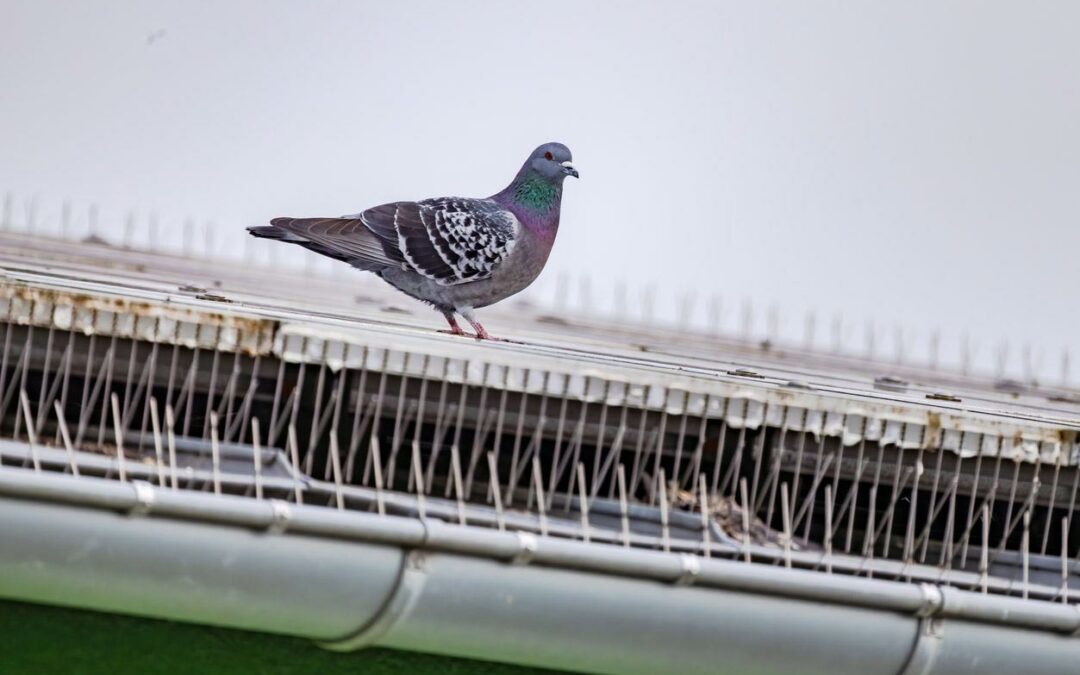
by Pigeon Patrol | Feb 10, 2025 | Animal Deterrent Products, Bird Deterrent Products, Bird Spike, Bird Spikes, Pigeon Control, Pigeon Droppings, Pigeon Spikes, Pigeons, Raccoons
Pigeons are notorious for perching, roosting, and making a mess on buildings, ledges, and signs. If you’re tired of constantly cleaning up pigeon droppings or dealing with unwanted birds, pigeon spikes are one of the best long-term solutions.
Pigeon spikes are a safe, humane, and highly effective method to prevent birds from landing in specific areas. Unlike harmful methods, spikes don’t injure birds; they simply make it uncomfortable for them to perch.
What Are Pigeon Spikes?
Pigeon spikes are narrow strips with upward-pointing rods that make it physically impossible for birds to land. They can be made of:
- Stainless steel – Durable, weather-resistant, and long-lasting.
- Plastic – A cost-effective alternative that still works well.
How Do Pigeon Spikes Work?
Bird spikes work by creating an uneven surface, preventing pigeons from finding a comfortable place to perch. With no space to land, they will eventually move on to another location.
Why You Need Pigeon Spikes
1. 100% Humane and Non-Harmful
Pigeon spikes do not harm birds. Instead, they create an environment where pigeons simply can’t land.
2. Protect Property from Bird Droppings
Pigeon droppings are not just unsightly; they also contain acidic properties that can damage paint, metal, and concrete. Installing bird spikes can save you money on cleaning and repairs.
3. Keep Business Signs and Storefronts Clean
If pigeons are constantly sitting on your business sign or awning, it can create a bad impression on customers. Bird spikes keep commercial properties clean and professional-looking.
4. Reduce Noise and Nesting Problems
Pigeons are noisy, and when they start nesting, the problem escalates quickly. By installing bird spikes early, you can prevent large infestations.
Where Should You Install Pigeon Spikes?
Bird spikes work best in areas where pigeons frequently perch and roost. Consider installing them in the following locations:
Roofs and Parapets
These areas provide pigeons with shelter and elevation.
Commercial Signs and Storefronts
Protect your business signage from becoming a bird rest stop.
Ledges and Windowsills
Pigeons love flat surfaces where they can rest and observe their surroundings.
Fences and Railings
Keep pigeons from gathering and creating a mess.
How to Install Pigeon Spikes
Installing bird spikes is easy and doesn’t require professional help. Follow these steps:
- Clean the Surface – Remove dirt, droppings, and debris for a strong adhesive bond.
- Measure and Cut – Trim the spikes to fit the specific area.
- Apply Adhesive or Screws – Use a strong bird spike adhesive or screws to secure the strips in place.
- Check for Gaps – Ensure pigeons can’t find small openings to land in.
Do pigeon spikes work for all bird species?
Pigeon spikes primarily target larger birds like pigeons, crows, and seagulls. Smaller birds may still find ways to land in between them.
Can I remove pigeon spikes if needed?
Yes, pigeon spikes can be removed without damaging surfaces, especially if installed using adhesive.
Are pigeon spikes weatherproof?
Yes! Stainless steel spikes are resistant to rain, wind, and UV exposure, making them highly durable.
Will pigeons eventually stop coming back?
Yes, if you remove food sources, block access points, and use deterrents consistently, pigeons will find another place to roost.
Where can I buy high-quality pigeon deterrents?
You can get bird spikes, netting, and repellers at Pigeon Patrol, a trusted name in pigeon control solutions.
Pigeon spikes are an effective, humane, and affordable way to stop pigeons from perching and making a mess on your property. By installing high-quality stainless steel or plastic spikes, you can protect your home, business, and buildings from damage caused by pest birds.
For top-rated bird spikes, check out Pigeon Patrol’s selection here.
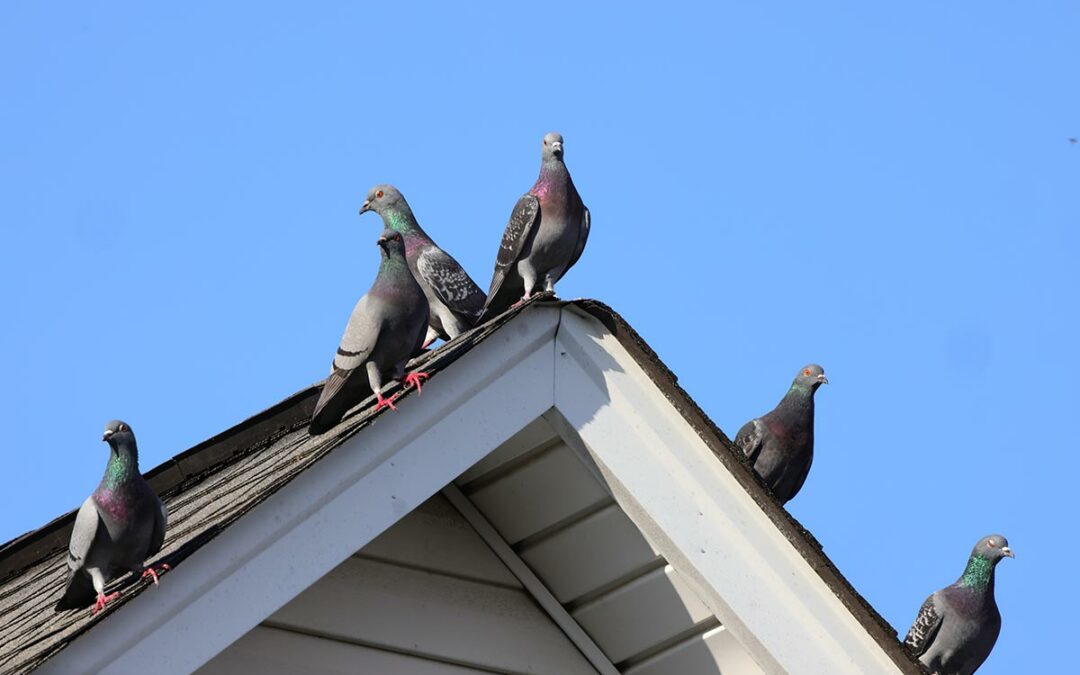
by Pigeon Patrol | Feb 10, 2025 | 4-S Gel Bird repellent, Animal Deterrent Products, Bird Deterrent Products, Bird Netting, Bird Spike, Bird Spikes, pet bird, Pigeon Patrol's Services, Pigeon Spikes, Pigeons, Raccoons, Sparrows, UltraSonic Bird Control
Pigeons may seem harmless at first, but once they take over a property, they can create serious problems. They leave behind acidic droppings, clog drainage systems, spread diseases, and make a lot of noise. If you’re dealing with a pigeon infestation, you’re probably wondering: how do I get rid of pigeons for good?
The good news is that there are humane and effective methods to control pigeons. In this guide, we’ll cover why pigeons are a problem, the best pigeon control solutions, and how to prevent them from returning.
Why Pigeons Are a Problem
1. Pigeon Droppings Cause Property Damage
Pigeon droppings are acidic and can erode stone, concrete, and metal surfaces. Over time, this can cause damage to rooftops, balconies, cars, and historical buildings.
2. Pigeons Spread Diseases
Pigeons carry bacteria, fungi, and parasites that can lead to serious health risks. Some diseases associated with pigeons include:
- Histoplasmosis – A fungal infection that affects the lungs.
- Salmonella – Bacteria that cause food poisoning.
- E. coli – A serious bacterial infection.
3. They Block Drainage and Ventilation Systems
Pigeons often nest in gutters, vents, and chimneys, causing blockages that can lead to water damage and poor air circulation.
4. Pigeon Infestations Hurt Business Image
If pigeons are constantly roosting on your storefront or business sign, it can create a dirty and unprofessional look that turns away customers.
Best Ways to Get Rid of Pigeons
Install Bird Spikes to Prevent Perching
Bird spikes are one of the best pigeon deterrents. They are designed to make it impossible for pigeons to land on ledges, fences, and rooftops.
Use Bird Netting to Keep Pigeons Away from Large Areas
If you need to prevent pigeons from accessing balconies, rooftops, or warehouses, bird netting is a great solution. It creates a physical barrier without harming the birds.
Install Pigeon Repellers (Ultrasonic & Motion Activated)
Ultrasonic pigeon repellers emit high-frequency sounds that humans can’t hear but pigeons find annoying. Motion-activated repellers use light and sound to scare birds away.
Pigeon Trapping for Severe Infestations
For larger infestations, humane pigeon traps may be necessary.
Simple Solutions
- Block Entry Points with Pigeon-Proof Barriers
Pigeons like to nest in vents, chimneys, and eaves. Use wire mesh or netting to block these spaces and prevent pigeons from returning.
- Clean Up Food Sources & Water Availability
Pigeons are drawn to food scraps and water sources. Seal trash bins, clean up outdoor eating areas, and remove standing water to make your property less attractive to pigeons.
Are bird spikes harmful to pigeons?
No, bird spikes do not harm pigeons. They simply prevent them from landing on surfaces.
How long does it take for pigeon deterrents to work?
Most deterrents work immediately after installation. However, pigeons may take a few days to realize the area is no longer suitable for roosting.
Do pigeon repellers work on other birds?
Yes, ultrasonic and motion-activated repellers can deter other pest birds such as crows and seagulls.
Will pigeons eventually stop coming back?
Yes, if you remove food sources, block access points, and use deterrents consistently, pigeons will find another place to roost.
Where can I buy high-quality pigeon deterrents?
You can get bird spikes, netting, and repellers at Pigeon Patrol, a trusted name in pigeon control solutions.
Pigeons can be a major nuisance, but with the right pigeon control solutions, you can protect your home or business. Whether you choose bird spikes, netting, repellers, or a combination of these, taking proactive steps will keep pigeons away for good.
For expert pigeon control products, check out our Pigeon Patrol products and browse our range of humane pigeon deterrents.

by Pigeon Patrol | Oct 15, 2024 | Bird Netting, Bird Spike, Pigeon Spikes, Pigeons
Dead pigeons were being found in a hospital at the centre of infection concerns years before action was taken to address the issue, an inquiry has heard.
The Scottish Hospitals Inquiry was told that as early as 2016, pest controllers were being called to the Queen Elizabeth University Hospital in Glasgow to remove dead pigeons from plant rooms, where air handling units linked to the ventilation system were located.
The inquiry was shown part of a survey by cleaning firm GP Environmental from March 2017, which stated “ledges, beams, walls, floors and walkways of the plant rooms” had “a heavy build-up” of pigeon droppings.
Another GP Environmental report from 2018, relating to sanitisation work in a plant room, said: “All pipe lagging will need replaced due to damage from pigeon fouling.”
Karen Connelly, who became general manager of estates and facilities at the hospital in 2018, having previously worked there as part of a project team until 2015, told the inquiry she had not been aware of these reports, but that the pigeon problem at the hospital was “well known”.
The former facilities manager, whose team was responsible for pest control, said it was not until January 2019 that she became aware pigeons were getting into plant rooms.
She said shortly before this, she became aware of a potential link between pigeon droppings and Cryptococcosis, which had been identified by the hospital’s Internal Medicine Training team.
Cryptococcosis is a fungal infection that can spread to humans from pigeon droppings.
Up until this point, she said, she thought pigeons posed a health and safety risk of “slipping, and also from an aesthetic point of view it looks dreadful as well”.
The sheer level of pigeon numbers are now posing a significant health and safety issue in many locations of the site
The inquiry is currently investigating the construction of the QEUH campus in Glasgow, which includes the Royal Hospital for Children.
It was launched in the wake of deaths linked to infections, including that of 10-year-old Milly Main.
GP Environmental was instructed to carry out a survey of the problem, and on January 8 2019 it reported a “significant feral pigeon infestation across the site at the QEUH, Glasgow”.
The report added: “The sheer level of pigeon numbers are now posing a significant health and safety issue in many locations of the site.”
Ms Connelly said she then visited the plant rooms, saying in her statement to the inquiry: “We found evidence of pigeon infestation and pigeon guano. This was my first visit to the plant room since the concerns were raised.”
She said she instructed GP Environmental to put together “a programme of work to clean every plant room within the hospital site, and to install proofing or block up any gaps in the buildings that pigeons may be able to access”.
She agreed with counsel to the inquiry Craig Connal KC that the reference in the report to health and safety issues was a “surprise”, adding she had not seen that in other reports from GP Environmental but she did not question it.
She explained: “I just assumed that because of aesthetically, how bad it looked, about possible slips and trips and falls, but also the fact that there had been that connection to the recent outbreaks in the wards”.
Possibly in hindsight we could have had regular inspections of the plant rooms and other inaccessible areas carried out by pest control companies, which may have prevented the problem arising to such a levelKaren Connelly
She said after starting clean-up work, GP Environmental was “on site daily for a period of weeks, if not months”, and she was shown photographs of pigeon guano in a variety of locations around the site.
In her statement to the inquiry, Ms Connelly conceded: “Possibly in hindsight we could have had regular inspections of the plant rooms and other inaccessible areas carried out by pest control companies, which may have prevented the problem arising to such a level.”
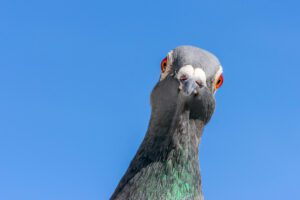
Portrait of a racing or homing pigeon looking into the camera.
The inquiry also heard that while all pest control issues were handled by the central facilities team and recorded on a single system, they did not analyse reports of infestations to identify trouble spots.
Ms Connelly told the inquiry: “Whether we had any analysis done in terms of what the make-up of all the calls were, I don’t remember us doing that.”
In the afternoon session on Friday, the inquiry heard from Pamela Joannidis, a consultant nurse at NHS Greater Glasgow and Clyde who said she noted concerns about dust collecting on top of chilled beams which ran through the hospital.
When asked how dusty they were, she replied: “They were a level above what you would expect.”
Ms Joannidis also told the inquiry condensation forming on the chilled beams would occasionally drip on to the wards below.
She said: “I don’t remember it being overly much, there was just drips and you didn’t know when the drips would happen. It could drip on to beds.”
The inquiry, taking place before Lord Brodie in Edinburgh, continues.
Pigeon Patrol
Pigeon Patrol Products & Services is the leading manufacturer and distributor of bird deterrent (control) products in Canada. Pigeon Patrol products have solved pest bird problems in industrial, commercial, and residential settings since 2000, by using safe and humane bird deterrents with only bird and animal -friendly solutions. At Pigeon Patrol, we manufacture and offer a variety of bird deterrents, ranging from Ultra-flex Bird Spikes with UV protection, Bird Netting, 4-S Bird Gel and the best Ultrasonic and audible sound devices on the market today.
Canada’s top wholesaler for bird deterrent products for twelve consecutive years.
Contact us at 1- 877– 4– NO-BIRD, (604) 585-9279 or visit our website at https://www.pigeonpatrol.ca/
Bird Gone, Pigeon Gone, Pigeon problems, pigeon spikes, 1-877-4NO-BIRD, 4-S Gel, Bird Control, Pigeon Control, bird repellent, Bird Spikes, sonic bird repellent, stainless steel bird spikes, bird spikes Vancouver, Ultra Sonic Bird Control, Bird Netting, Plastic Bird Spikes, Canada bird spike deterrents, Pigeon Pests, B Gone Pigeon, Pigeon Patrol, pest controller, pest control operator, pest control technician, Pigeon Control Products, humane pigeon spikes, pigeon deterrents, pigeon traps, Pigeon repellents, Sound & Laser Deterrents, wildlife control, raccoon, skunk, squirrel deterrent, De-Fence Spikes, Dragons Den, Pigeon, Pigeon Patrol, Pigeons Roosting, Vancouver Pigeon Control, Bird Spikes, Bird Control, Bird Deterrent, Pigeon Deterrent, Surrey Pigeon Control, Pest, Seagull deterrent Vancouver Pigeon Blog, Birds Inside Home De-fence, Pigeon Nesting, Bird Droppings, Pigeon Dropping, woodpecker control, Keep The Birds Away, Birds/rats, seagull, pigeon, woodpecker, dove, sparrow, pidgeon control, pidgeon problem, pidgeon control, flying rats, pigeon Problems, bird netting, bird gel, bird spray, bird nails, bird guard, Pigeon control, Bird deterrents, Pigeon deterrents, Bird control, solutions, Pigeon prevention, Pigeon repellent, Bird proofing, Pest bird management, Pigeon spikes, Bird netting, Humane bird control, Bird exclusion, Urban bird control, Anti-roosting devices, Pigeon removal, Bird barriers

